Blog
04.01.26 / 01 / filofax as blog
Before I threw out the Filofax diary inserts I went through them making notes of significant items. The notes looked like blog entries, so I turned them into an extension of my blog archives back to 1988. Click the blog archive link above to see.
There isn't enough material to do the usual monthly archive pages, so it's a page per year. I haven't included all of my notes, some things are too trivial or personal or have no story to tell. Conversely I've added things that weren't in the Filofax but are too important or interesting to leave out now that I've made the pages.
It's very clear that my life changed dramatically from 1996 onward, as I got involved in alternative worship. 1998-2002 is a whirlwind - I was simultaneously in several churches, several discussion boards, writing columns, making or editing websites, creating parts of events, photographing and publishing them, designing flyers and publicity and so on. It was possible because I only needed to work intermittently for a while. By late 2002 I had to get a full-time job in architecture again to repair my finances, so some of this stuff had to stop or happen more slowly, but then I started a blog.
I have diaries from before the Filofax, but they don't contain much information (and I have no desire to revisit the periods). There was something about a Filofax which encouraged a thicker narrative, perhaps because I lived out of it in an active way, it was always open on the desk being written in.
It's hard to remember how analogue life was in 1988. To publish a blog would mean typing it out (a word processor at best) and faxing it, or posting photocopies. I suppose that's what a zine was.
06.12.25 / 01 / family tree 2
I was surprised when various friends said they had no interest in their family trees. I know some people are obsessive about it, but if I were a Maori, an African, a Jew or a member of the Sicilian Mafia nobody would be surprised that I was researching my kinship network.
Modern Western society encourages us to see ourselves as individuals, without significant ties to kin or tradition or place. This brings many benefits in terms of self-actualisation, as well as oiling the wheels of capitalism and consumerism. The cost is alienation. Our psychology developed in tribes - the business of Dunbar’s number/the monkeysphere is about tracking relationships in a kinship group. Having broken free from family we recreate it as ‘chosen family’. Who and how we are in the world is always relational.
[Maybe Dunbar's number is why I baulk at researching the other ten siblings on every 19th century family tree branch. There's a point at which you want to limit the number of people in your 'relational family' to ones you can care about!]
So in researching my family tree I am renarrating myself. There is no scientific mechanism that I know of to make me want to do what my forebears have done - though I can imagine a cultural imperative. But this is to say that we construct a personal narrative that includes our family. Nowadays that is taken to mean only our immediate family, but to research one’s wider and deeper family opens one up to the possibility of them affecting one’s narrative too. It’s hard to learn that one comes from a long line of fishermen and sailors without wondering whether one should also have been one. We are encouraged to see it as a purely personal decision, but it feels strange that a chain has been broken (of course there are chains that need to be broken, but we are looking at honourable occupations). My nieces are good sailors, they just need to start catching fish :)
05.12.25 / 01 / family tree
Meanwhile I have been researching my family tree on Ancestry since late 2024. This had been coming for a long while, for a number of reasons. My brother had received a box of old family certificates going back into the 19th century, on our father’s side. My mother had told me all kinds of things over the years that I had surreptitiously written down and tried to make sense of in a self-created tree. She came from a broken home, she lost contact with her father and his family, and then with her mother’s family as well, so there was a mystery. We had a few photos, a couple of names, a few stories. My brother set up on Ancestry and joined me in. When my mother died and I came into possession of the family photos and other old documents, it gave new impetus.
It’s an extraordinary rabbit hole. It involves databases and archives connecting out there and feeding you stuff. You sift evidence in the light of stories or knowledge that you have. It feels like detective work in a story. Startling revelations arrive at 2:30am when you are about to go to bed. If you find the right thread to pull, a person’s life history can come tumbling out of nowhere in detail - otherwise there’s nothing. Military records tell you a lot - in illegible Edwardian handwriting. Old family hearsay is proved true, but there are hidden surprises and scandals.
On my father’s side I come from a long line of sailors and fishermen. We followed the fishing trade from Barking in the 19th century, to Great Yarmouth, to Grimsby. My mother’s side were itinerant farm labourers in the fens of Lincolnshire - constantly moving from farm to farm in the same 10-mile radius in what must have been a hard existence.
Back in the 19th century everyone had 6 or 10 siblings, which is daunting - too much new family! But some are very interesting. One sets up boundaries - do we have photos, or stories, or artefacts? Some people are ‘the family’, others are visitors who married in - it’s a subjective thing, where the main stream is. It depends on where you are in the tree.
The people I would most like to meet are two of my great-grandfathers, one on each side. Both feel like key characters in our family. Both led interesting but very different lives. My father’s grandfather was a sailor. His ship was in Hamburg when WW1 broke out, and he spent the war in a famous POW camp - we have the postcards. After the war he retired from the sea and operated the dock gates in Grimsby. My mother’s grandfather was in the Royal Field Artillery in the Boer War, then joined up again in 1914. He fought in Belgium in 1915, then in the Balkans in 1916 before being invalided out in early 1918. He separated from his wife and children early in the war, and by the time my mother knew him in the 1940s he was living with a woman who was not his wife - but he was a Roman Catholic and perhaps couldn’t get a divorce.
Another surprise was one of my father’s great-uncles. He was a fisherman, but also a Naval Reserve. In 1915 his boat vanished without trace. No-one knows what happened, but the crew are listed on the big war memorial next to the Tower of London which commemorates those who died at sea in both wars and who have no grave. Fishing is always risky and was riskier in the war, but fishing boats were also used for covert spying on German shipping movements, which may explain the memorial and the medals to his widow. We have his Bible.
03.12.25 / 01 / filofax
See, this is how a rabbit hole happens.
I wanted to fix the velcro on my umbrella (the bit that wraps round and holds it closed). I got the sewing box out and found that the cotton had mould on - an old leather cord had gone mouldy. So I got the rest of the things out of the drawer to check them, including all the Filofax diary inserts that I had kept right back to the 80s. I had been thinking about getting rid of them anyway, but of course I had to go through them to check. Keeping them wasn’t just sentimentality - it was essential pre-digital record keeping. Periodically one would need to give precise dates of employment or residence for something.
It wasn’t just an 80s fad, although a matt black Filofax in a Chevignon backpack made me ‘one of the 11 trendy people this week’ (The Face) in 1988. It was the analogue equivalent of a smartphone, with paper apps.
I got a Filofax in late 1987 after a change of job, to record my work diary, timesheet hours, contacts etc in a compact and professional way. One was given ‘work diaries’ but they were always ugly and random formats. One thing you could do with a Filofax was keep half of the previous year’s diary in alongside the coming year, so you could refer back. There were lots of tempting multicoloured inserts for all kinds of things, I bought a few but didn’t much need them - it was always about the diary.
I always recorded the truth about my work hours and what I was doing in my own diary - and then chose what to record officially. Some employers didn’t allow you to record overtime, but I always kept a record of actual hours. I think it’s disgraceful and stupid not to know what your workforce are actually doing, regardless of whether you pay them for it or not. You need to know who’s under pressure, or struggling, or slacking, which projects need resources and so on. Until the late 2010s, working hours recorded on weekends meant I had travelled into the office. It’s sad to see how often that happened.
Eventually digital record-keeping and calendars took over, but it took a while for them to be reliable and to sync properly between devices and software formats (and one’s work calendar isn’t portable between employers). Until then the Filofax was a stable personal record. I started to use Apple Calendar at the beginning of 2013 - it is empty before - and I stopped using the Filofax.
The problem by then was that the information didn’t sync. This wasn’t an issue when nothing synced, but it became an issue when other things did. Digital things shift about because there’s little cost to doing so. It became tiresome to cross out and rewrite meetings that kept changing time and venue right up to the last minute. And phone numbers in a Filofax can’t be called by touching them.
My first binder was a 1987 ‘Wellington’ in ribbed black rubber. I have haptic memories of the magnetic clasp and rubber ribs when I look at pictures. The chunky thingness of it was pleasing, I wish I'd kept it. In 1999 I got the Personal Active model, also rubberized, which zipped up to stop the inserts getting dirty in my bag - but it was a big beast. I downsized in about 2010 to a small one to save space and weight.
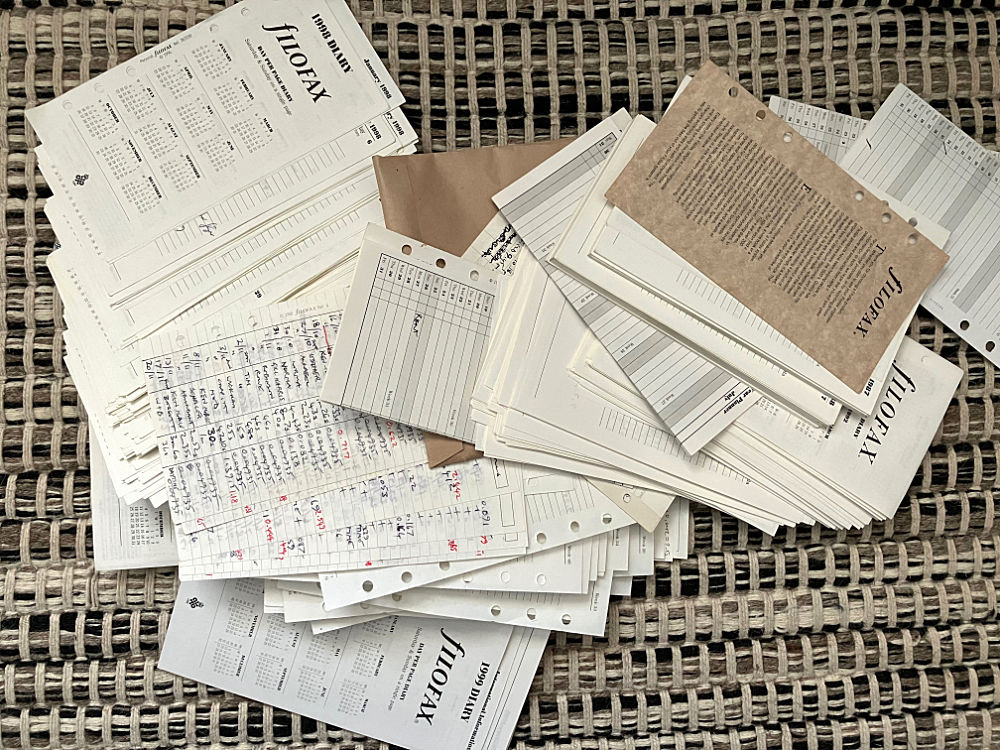
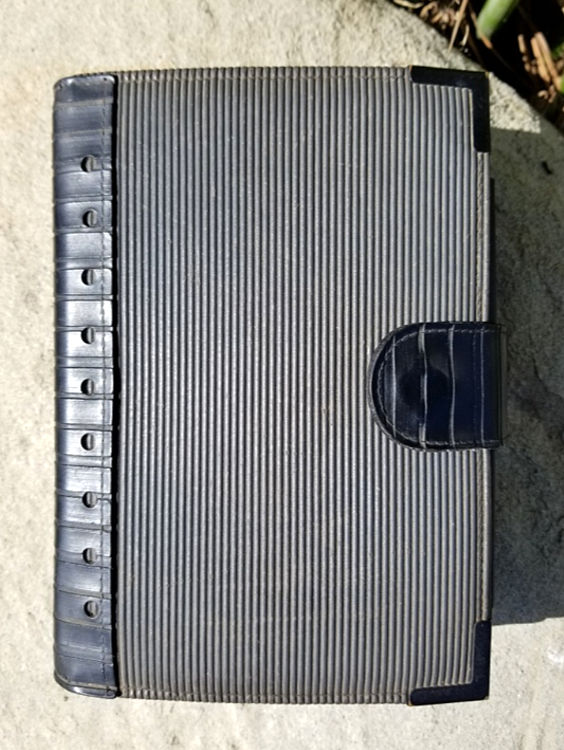
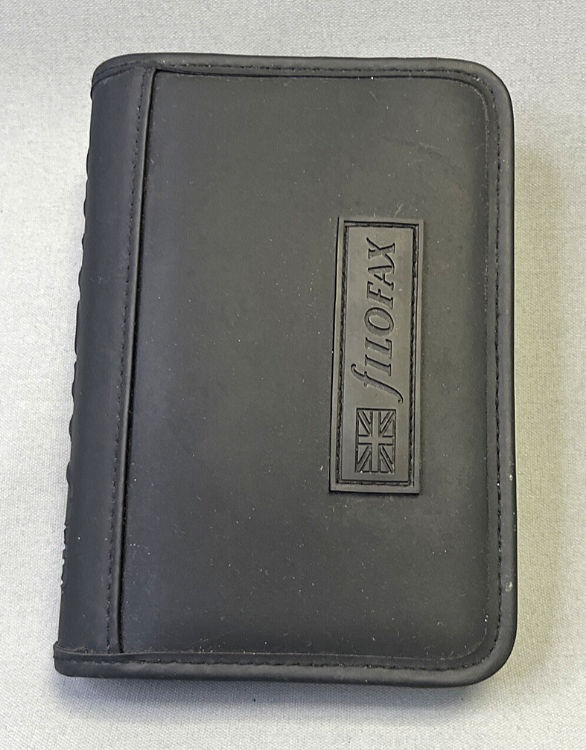

Above, some of my old inserts, 1987 Wellington, 1999 Personal Active (not my photos), my untidy desk 2003.
The place of the Filofax in my bag was taken by a moleskine for notes and sketches. It’s more compact and stays bound in its cover when you’ve finished with it. It’s strange that I never used the Filofax for that kind of thing, I always meant to.
06.11.25 / 01 / collecting
Back in the summer I went through the contents of my mother’s house, to see what there was in cupboards and the attic, to make an inventory and value it for estate purposes. I threw out the junk to clear the ground, but otherwise I didn’t rearrange anything.
Now I am going through it all again, making collections with an eye to give or take away. Things that were scattered are now brought together.
My father’s life is in a large tin. It already was, my mother put it there, but I have added. Boys Brigade badges, cards, certificates, school reports, his drawing instruments, a cigarette case, and so on. My mother’s life is in a box, and a tin, and a bag right now. She kept so many cards - her 21st birthday, wedding, first anniversary - beautiful 1950s cards, bright pinks and baby blues, kitsch, but more delicate and coherent than nowadays. Add in the Golden Wedding cards, the Valentine cards from my father, the sympathy cards when he died. And so on. My mother’s diaries, 30 years or so, are in a drawer, to be gone through sometime. These are things that can’t be thrown out, but they need custodians. Not owners, because they belong to the family and will be passed on. Maybe one day some of these things will go, when they have lost their significance, but not yet.
There are specific legacies to be given, but we need to think about keepsakes for other family members. For me and my brothers, many things come to us naturally. Stuff about us that our parents kept, reports and certificates and photos. Childhood cards we gave that they kept, which now return to us.
I have a list of the furniture - the things we will keep, if we can make space, and the rest. And the many domestic items that are not exactly personal, but are significant or interesting. Part of the home or of our lives. I have to restrain my magpie tendencies and let others have their choice!
It’s emotionally arduous work. It’s a process of dismantling. Drawers are empty, gaps appear on shelves. The fabric of a home begins to dissolve. It’s probably always hard, but this house has been the family home for almost 60 years. It’s not just the last place our parents lived.
06.10.25 / 01 / jeff hawke
I’ve had a couple of images from Jeff Hawke floating around my mind since the early 70s. One is of a scary woman called Lilith. The other is Hawke and a companion driving into a future London - it would be great to see that now for comparison. I did find Lilith, but not yet the London picture.
Jeff Hawke was a daily comic strip by Sydney Jordan that ran in the Daily Express from 1954 to 1974. In the early years it was drawn and mostly written by Jordan, and was a standard space action series, set in a 1980s and 90s that looked like the 50s but with '2001'-style aerospace technology - moonbase, space station, supersonic airliners etc. Jordan had studied aerospace engineering so the strip showed actual advanced projects that didn't make it in real life.
In 1960 Jordan’s dialogue writer Willie Patterson took over the plots and storylines as well, and the strip took a highly imaginative turn, featuring weird and very various aliens who bickered and schemed and dragged Hawke and friends into bizarre or perilous situations that had nothing to do with the usual invasion-of-Earth stuff. Patterson retired in 1969 and the strip was never as humorous and clever again. By then the aliens were often scantily clad women and the strip took an erotic turn with much partial nudity. In 1974 the newspaper suddenly cancelled it (not because of the nudity as far as I know).
Jordan began a new strip in 1976 called Lance McLane, set in the late 21st century. This ran in a Scottish paper until 1988, but to sell it for syndication Jeff Hawke was 'transmitted' into the body of McLane and the strip continued in two versions as Jeff Hawke and Lance McLane. There was no continuity with the original strip, Hawke didn’t even look the same. The artwork and writing were often done by others with variable results.
Jeff Hawke was popular in Europe (quite a lot of strips on this site, but in Italian! Go to the bottom for the links.) You can buy the full run in Italian, but the English language republication has been limited. There are a couple of anthologies of 60s stories by Titan Books, and the Jeff Hawke Club published the whole lot in a limited edition 2003-2018 but appears to be defunct. The early-00s version of their website is fun though.
I was too young for the best years of Hawke, and since I didn’t read the newspaper daily I couldn’t follow it anyway - there were some striking images, but in truth it was too sophisticated for me then.
05.10.25 / 01 / postmodern or post-modern?
I don't quite know whether to hyphenate or not. Jencks always hyphenated, to emphasise that it was a work in progress, moving away from modernism but not yet definable as a single new thing. To me, the hyphenated form suggests the early stages in the 60s and 70s, experimental mutations of modernism in many directions, all sharing an impulse towards metaphor and communication. By 1981 this had converged almost everywhere to a form of classicism, which is what most people now think of as post[-]modernism. It feels more comfortable to drop the hyphen for postmodern classicism. There isn't any real consensus yet.
04.10.25 / 03 / postmodern colour
Postmodernism was the last architectural style to be developed entirely as hand drawing, making particular use of coloured pencils, crayons and pastels. The drawings were often saleable as art. So colour was an essential part, built into the design from the first sketches - the challenge was often how to realise the design colours in the actual buildings. Colour systems for architectural finishes took a while to catch up.
But colour is a vulnerable element in buildings. It weathers and fades, it goes out of fashion and is replaced. In the 80s people were reacting against the greys and browns of 1960s and 70s architecture - how drab, let’s have red and green in stripes and grids. And now people say, how overbearing and obtrusive, let’s replace it with black, grey and brown.
Modernism in the 1920s was often brightly coloured, inside and out, because it sat close to painting. But it was published in black and white photographs, giving the impression of a 'white architecture'. After WW2 much had been lost, and restorations tended to omit the colour, which had been forgotten or lacked evidence. Le Corbusier's Villa Savoye was restored as the epitome of the 'white architecture', but the curved walls on top had been blue and pink - like a Corbusier still-life. It still hasn't been recoloured. Corbusier continued to use strong colour in his buildings, but this wasn't much copied, while the raw concrete was.
High-tech and postmodernism brought the colour back, but it was controversial, because colour stands out from the context. The convention is to blend in. Architects play safe rather than have a scheme rejected because of the colours. How did John Outram get away with his outrageous schemes? Is it because they are so bold - an argument for being braver? Is it because the forms are historicist, and this disarms traditionalists who would oppose an equally brazen modernist building?
04.10.25 / 02 / the vanishing 80s
In the last couple of years I’ve been photographing 80s and early 90s office buildings in London, which are being pulled down en masse at the moment. Certainly they are tired and unfashionable, but the reason to demolish 40 year old buildings is because the land values will now support 40 storeys rather than 10.
Buildings usually can’t be listed for preservation before they are 30 years old, so many 80s buildings are vanishing or being radically altered before they can be reassessed for historical value. The demolition of much of Broadgate - an admired and coherent scheme that seemed surely destined for listing - made me pay attention. As usual this happens just as a period starts to be interesting again for designers, which is when it is at the nadir of value for the world in general.
Not all 80s buildings are postmodern, but postmodern styling is vulnerable to unsympathetic treatment. The Landmark House refurbishment is symptomatic - strip the obvious postmodern elements and paint the windowframes black for a fashionably neutral look. The refurbishment contractor's website talks of 'releasing its asset potential' which sums it up - owners and agents don't want architecture as such, they want maximised floorspace in a generically fashionable style that's easy to let to tenants who want whatever looks 'prestigious' at the moment.
Maybe 1980s buildings had too much architecture on too small a scale - a frequent fault of the period. 80s stuff was small by today's standards, but didn't know it. Everyone was over-reacting against 1960s monolithic modernism - hence complexity of form and elaboration of detail. I know, I did it! When I look at those facades I know how someone sweated over every pilaster and balustrade.
We wanted to revive the richness of ornament of pre-Modernist work, but there was seldom the budget to do it properly. Postmodern architecture was historicism done cheaply - the simplification, the cardboard-model effects. This could be witty in the hands of a knowing architect, or dull and debased otherwise. The style was meant to be a new beginning, but quickly got a bad reputation. Architects, and clients, returned to a more stylish modernism. The heritage challenge now is picking out the good postmodern work from the commercial rubbish.
04.10.25 / 01 / terry farrell
Postmodern architect Terry Farrell died at the end of last month. I had just photographed Landmark House in the City, which I hadn’t looked at before but remembered from a fuss about ten years ago. It had been subjected to a makeover that removed its postmodern entrances and red granite cladding stripes. Farrell and others protested - he considered it to be one of his best.
And then I visited the Comyn Ching triangle in Covent Garden - listed at the time of the Landmark House fuss to prevent similar damaging changes. Comyn Ching is a wonder - sensitive restoration of 18th/19th century buildings with bold but appropriate postmodern additions. The doorcases and ironwork are reminiscent of Mackintosh - a definite 1900 feel. Mackintosh was a big influence on British postmodernism in the years around 1980 - this was when he became an important figure again. His grids and abstract-classical mouldings were an accessible and affordable way to do ornament. We didn't attempt to imitate the complex Art Nouveau stuff!
I should go and look at some more of Farrell's work, before someone spoils it. I've tended to take it for granted. 125 London Wall aka Alban Gate is next on the list.
01.10.25 / 01 / blitz kids
More of my life as museum exhibit - the Blitz Kids at the Design Museum. That post-punk movement that started as Bowie nights run by Steve Strange and Rusty Egan for their select friends, hit the media in 1980 as ‘Blitz Kids’ and 'New Romantics’ and became the mainstream of early 80s British fashion and pop.
Strange and Egan innovated in British club culture - the club was no longer the venue, but the people and their music. The venue was anywhere that would have them - Strange and Egan would guarantee a crowd of customers on an off-peak night. The club moved around - the media caught up with it at Blitz, a 40s-themed venue in Covent Garden that had nothing to do with what went on - but there was never a fixed location or name. ‘New Romantic’ was a media headline that stuck for lack of anything else. The Face called it ‘the cult with no name’. This ‘portable club’ model became the new norm for the 80s and beyond, at the sharp end of clubbing.
The movement was entrepreneurial. People made their own clubs, fashion labels, shops, furniture, music, magazines etc and hyped them mutually - in the recession no-one else was going to help you. The fashion designers in particular suffered from lack of financial backing - it’s sad to see the quality of work that never made it big - it would be different later, in the days of McQueen and Galliano.
I never went to Blitz or its associated clubs - I was a student in Bath at the time. But we were doing similar things, and so were people in Sheffield, and other places around the country. It was the next logical step - after punk the rules of fashion were suspended for three or four years, you could wear anything, and people wanted to dress up. When we saw the Blitz Kids in the papers we said, “oh they’re doing it too”.
The Blitz Kids’ advantage was that they had real fashion designers among them who were making and wearing couture outfits to the club. The rest of us were restricted to creative salvage. In those days ‘thrift stores’ (a much later term) were not curated - full of the contents of dead people’s houses, and therefore much more interesting. Cool stuff from the 50s and 60s, but the body shapes were not the same as young students. Black and white tie evening dress was the thing for men - tuxedos and tailcoats, cummerbunds and waistcoats, you could get the whole thing with some shopping around. The issue was that this stuff had usually been made for short fat old men. Women went for ballgowns, or 50s-60s dresses and shoes, with similar size issues. The size issues did perhaps assist with the cross-dressing though.
Many of the key players at Blitz lived in squats in Fitzrovia. The photos are astounding - it’s hard to believe that parts of central London were that derelict less than 50 years ago. There is a little video of scenes from the late 70s which shows the shabbiness and drabness of London then. This is where creativity thrives - see also the state of New York at the time, and what it birthed.
Club for Heroes is now Club for Pensioners. Everyone who was there is now old - the exhibition was full of old people. I paid a ‘concession’ ticket price for the first time ever - I was bemused that nobody questioned it - I must be looking old today, I thought. The interview clips of Blitz Kids as they are now were barely recognisable - except for Marilyn, who looks the same but older in a Helen Mirren sort of way. Steve Strange sadly died ten years ago.
It was a period I went through, it was fun at the time, but it didn’t stay with me - whereas acid house ten years later did. I was wryly amused by the exhibition, but don’t want to go back there.
21.07.25 / 01 / clean air
I found a couple of old photos of central London, before the skyline changed. I attempted to colour-correct one, and then I realised - it's not an old-photo problem, it's smog. The brownish haze and sickly light was normal then. I had forgotten. The current photos show clear blue sky, at the end of a 30C heatwave with no rain for weeks. Looking north from Horizon 22, on the hottest day of the year, I can see detail of the fields on the horizon.
London was famous for its coal smogs, but these ended in the 1960s after clean-air legislation. By the end of the 80s photochemical smog was the problem. Commuting in across south London, I could tell the air quality by whether I could see the BT Tower - or not. The skyline would fade out or even vanish. In the late 90s I was working near Oxford Street, and everything in the office would be covered in a black dust. It was the particulates from the diesel buses and taxis that choked Oxford Street in those days. If you blew your nose it was black. In 2003 the worst smog I can remember extended out to the edge of London, you could see it in the length of a street and taste it in the air.
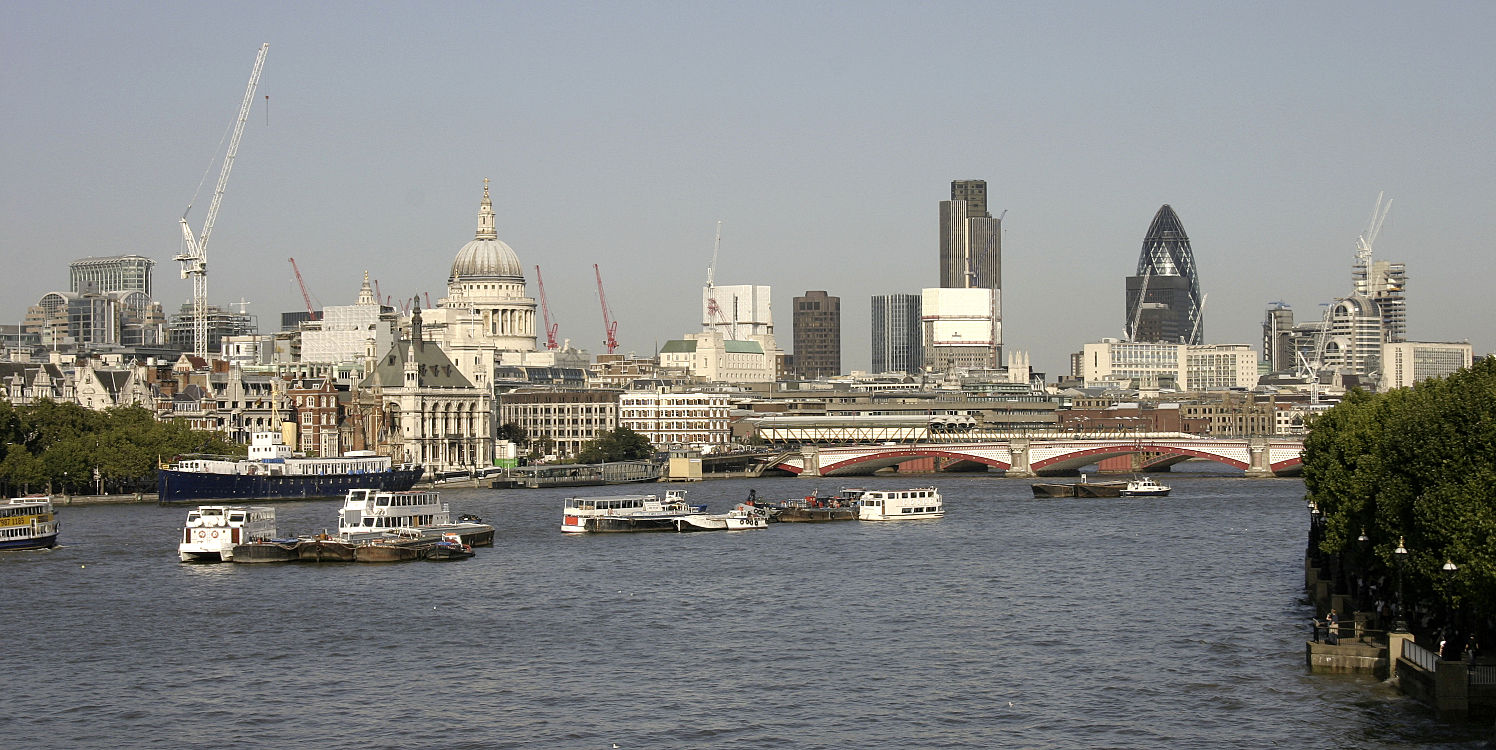
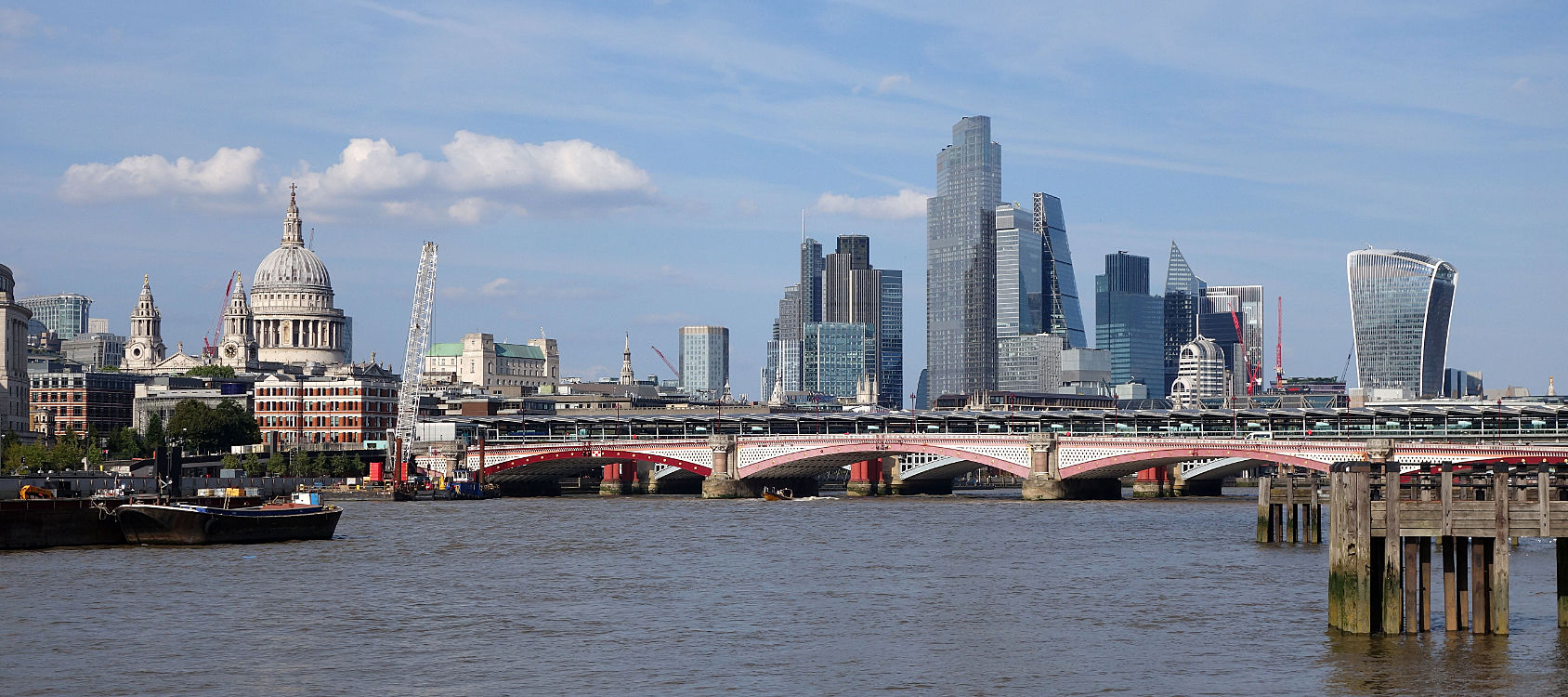
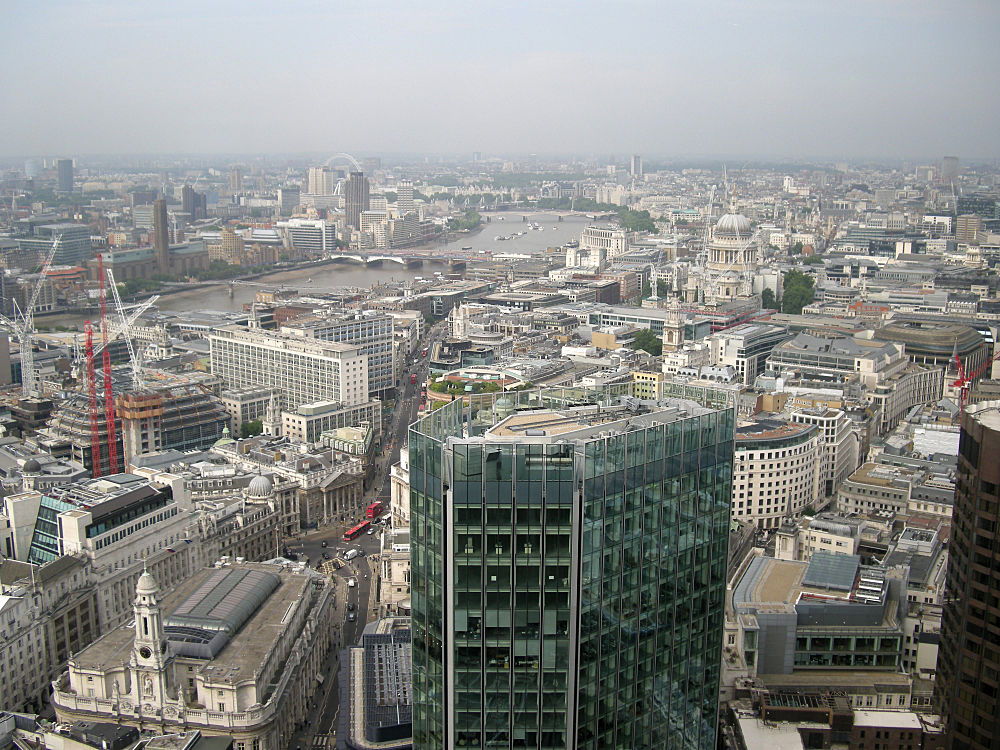
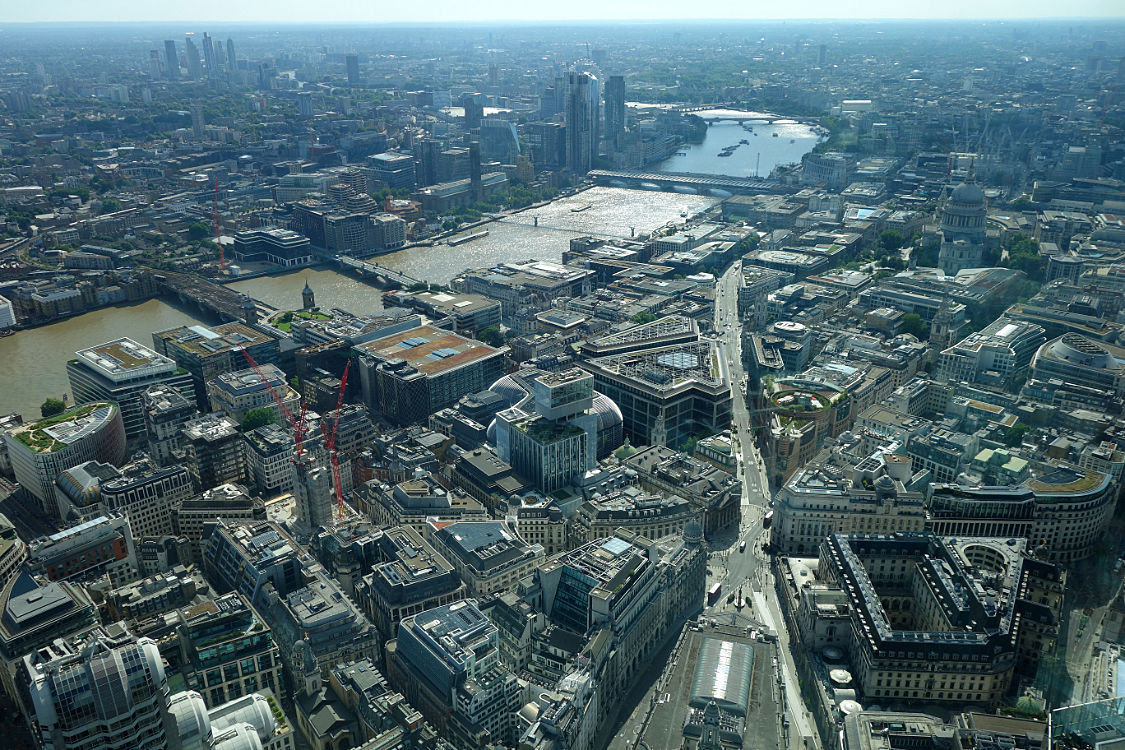
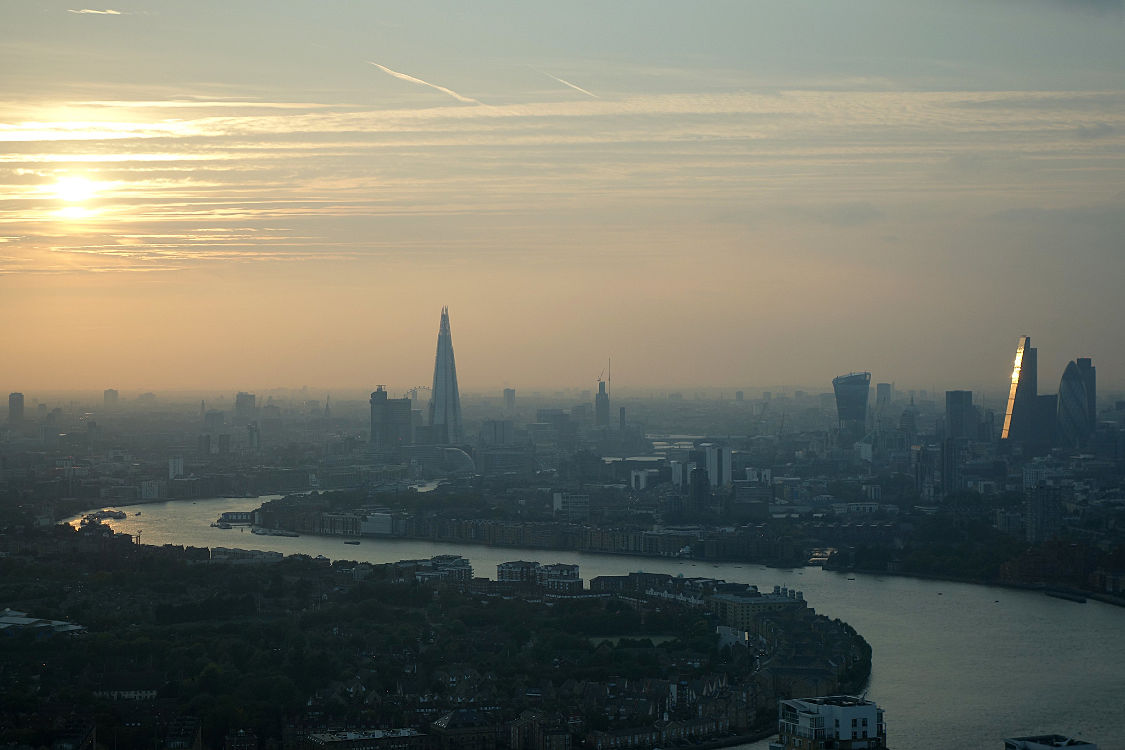
And now the photos tell a different story. Above, 2006, 2025, 2009, 2025, 2014. The London-wide ULEZ (Ultra Low Emissions Zone) that forced everyone towards hybrid and electric vehicles has had an effect. The buses and taxis don't belch fumes. The smell of a petrol exhaust is as rare and surprising as tobacco smoke. Like the indoor smoking ban, people complained, but they wouldn't want the old air quality back. It's happened gradually so hardly anyone notices.
I wish I had taken more photos of the skyline before 2010. I didn't because it was boring, and I didn't realise that I would want more 'before' shots to compare with what was about to happen.
29.06.25 / 01 / in pursuit of repetitive beats
Yet another instance of my life being treated as history. Nobody under 50 was there.
In pursuit of repetitive beats - a virtual reality adventure at the Barbican.
It's 1989 and finding the party is the only thing that matters.
Join in this culture revolution and travel back in time to the heart of the Acid House scene with the UK's biggest VR experience.
Using technology to create a truly collective experience, groups of four people can share the same virtual space and interact together as rave culture pioneers.
The rave scene has always been about organic, energised communities creating shared experiences in physical and spiritual spaces. With the world premiere of its newest version, In Pursuit of Repetitive Beats honours that spirit and unifies us all in a new and transformative way.
Strangely, they have an Access pack which describes everything, so I knew what was going to happen.
You need to see the making-of movies:
So…
The Tron-style parts took up too much time and contributed little. The exception was the radio-tuning part which was stunningly pretty, but we didn’t get enough time to really listen to the different 1989 stations. This lack of time was an issue elsewhere - you just get really into a scene and you’re being moved on - less of the Tron-filler please so we can spend longer in the content-rich parts! Of course, because I was there I’m more interested in the truthfulness of the detail, whereas some things that maybe seem exotic to a 20 year old are banal to me.
When you get to the rave scene, the crowd are grey silhouettes, not fully rendered people which would require a lot of computing power. And you don’t spend much time there, or hear a selection of tracks - which was the point of going there after all! The track is ‘Energy Flash’ which is from 1990 not 89! Our virtual hands are given virtual glow-sticks to wave around - this is a terrible cliche that didn’t really happen until 90s trance superclubs.
And then there is a weird section involving ‘glowing euphoria’ then floating through an empty wood and over a town. The documentary narrative gets lost here. Why not do a proper chillout and watching the sunrise section?
It was sanitised. No mention of the problematic aspects - drugs, drug dealers, money, untruthful promoters, criminal trespass, heavy-handed policing. Some of these things could be add-on modules or happen to random punters:
- police beatings and arrest (one for the haptic vest)
- buying drugs
- being sick from bad drugs
- being hit on by loved-up punters
- arriving to find it has been called off
In the car for the journey home sequence, the simulated guy in the back seat next to me looked ill - I don’t think it was intentional but the sheen on his face and the way he licked his lips didn’t look good. It would have made an amusing shock ending if he threw up. Virtual vomit of course so no-one would get splattered.
It’s funny how the experience of the music gets neglected. It becomes a background to the visuals. But the scene was built around exciting, euphoric, innovative music, and we need to hear and feel that excitement to understand the motivations. It wasn't the music of Kylie Minogue or Guns'n'Roses that drew people out to warehouses and fields. They went to hear a particular kind of music put together a particular way, that could not at that time be easily heard in any other way - unless you were part of the clubland in-crowds of London and Manchester. It democratised a marvellous experience that had only been available to a few.
I wonder how much the people who made this were into the music, even if they were there. Instead, it feels like there's a 21st century emphasis, on having a social experience with your friends because it's the must-do thing to do, and the actual content of the experience is secondary. Note the wording of the introductory paragraphs above which talk about community and experience but don't mention music.
So hmmm. Amusing but 1989 was not like this. I went home and listened to actual 1989 music from a cassette that was simulated in the VR.
29.05.25 / 02 / colours
For me the story of this year's Clerkenwell Design Week is the return of strong colours after a decade of muted pastels. It's refreshing but it raises issues about longevity. The most sustainable thing is to keep your furniture a long time (and good furniture will last 30+ years) - but what happens when colours go out of date?
The obvious answer is to put fashion colours on things that are easily changed, like upholstery or painted surfaces. But this year we have metal frames and solid plastic parts in fashion colours. So we will need to love our pink-legged chair even when that shade of pink is out. And learn to enjoy the datedness of things rather than seeing it as a reason to discard them.
On the other hand, Paul Smith used to say that the brightly coloured clothes in his fashion shows were there to get the photographs and the publicity, but almost all of the retail sales were the blue and black versions. Will furniture specifiers just pick the neutral colours?
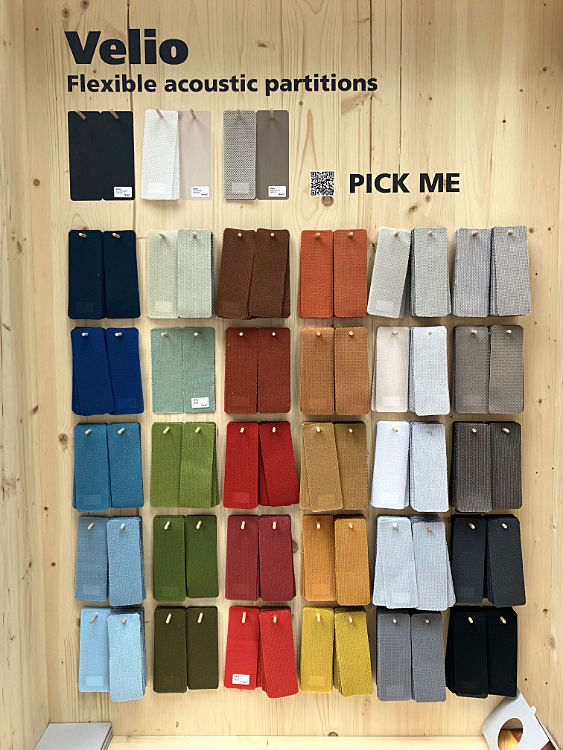
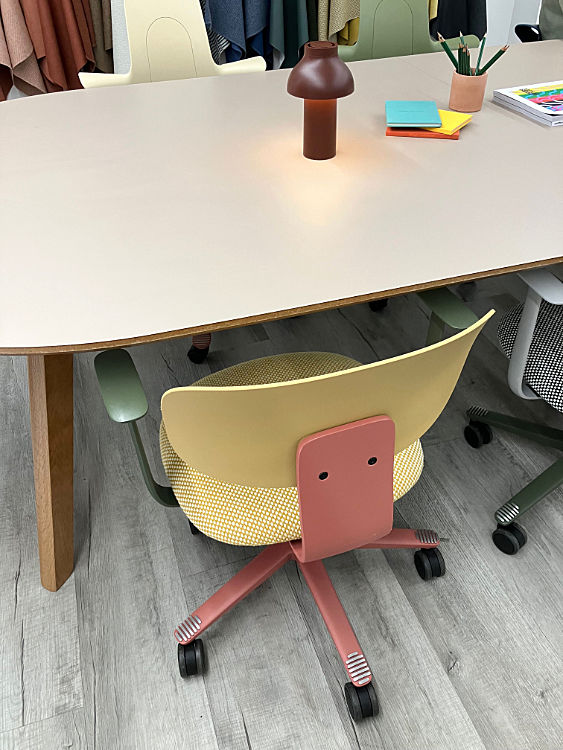
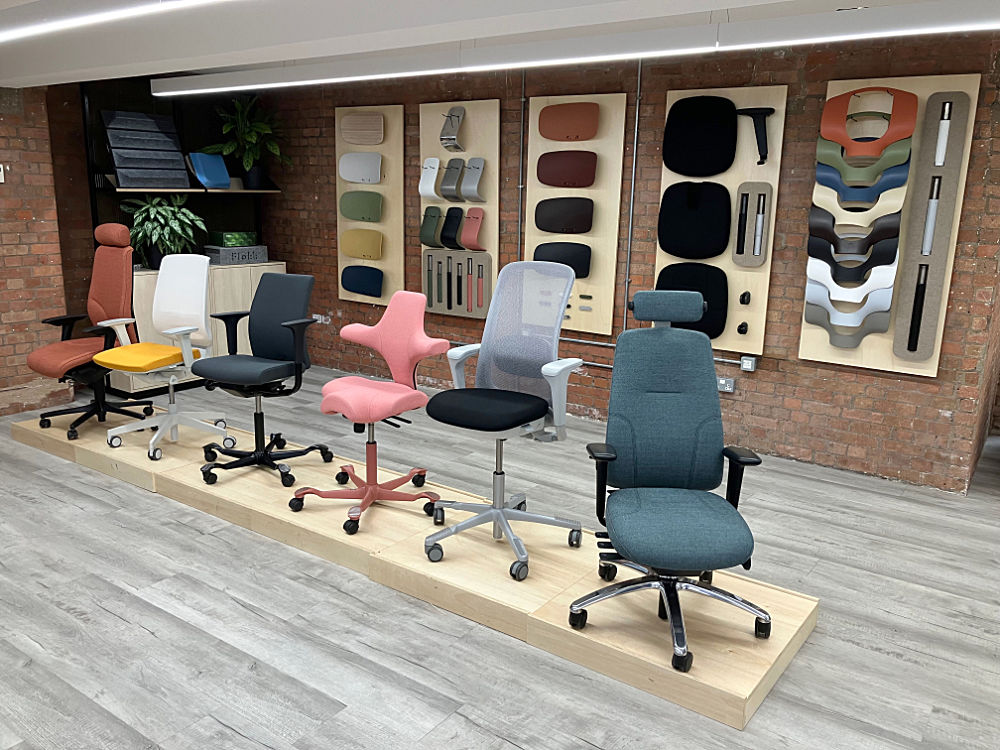
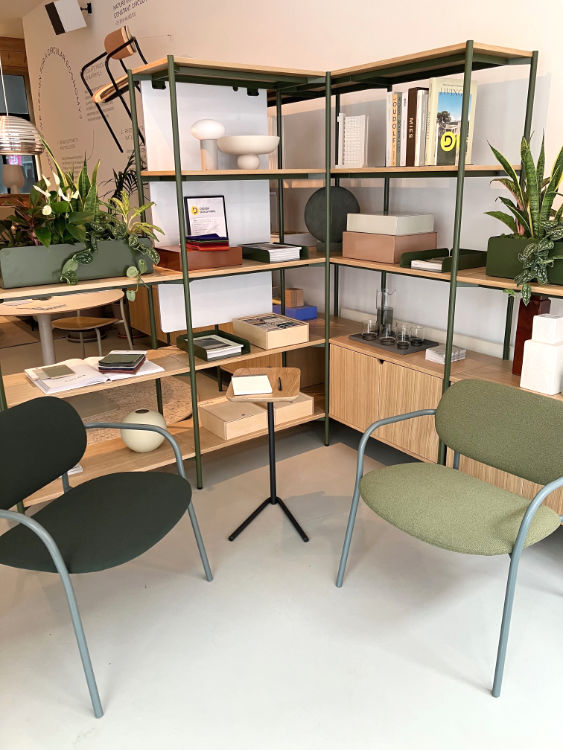
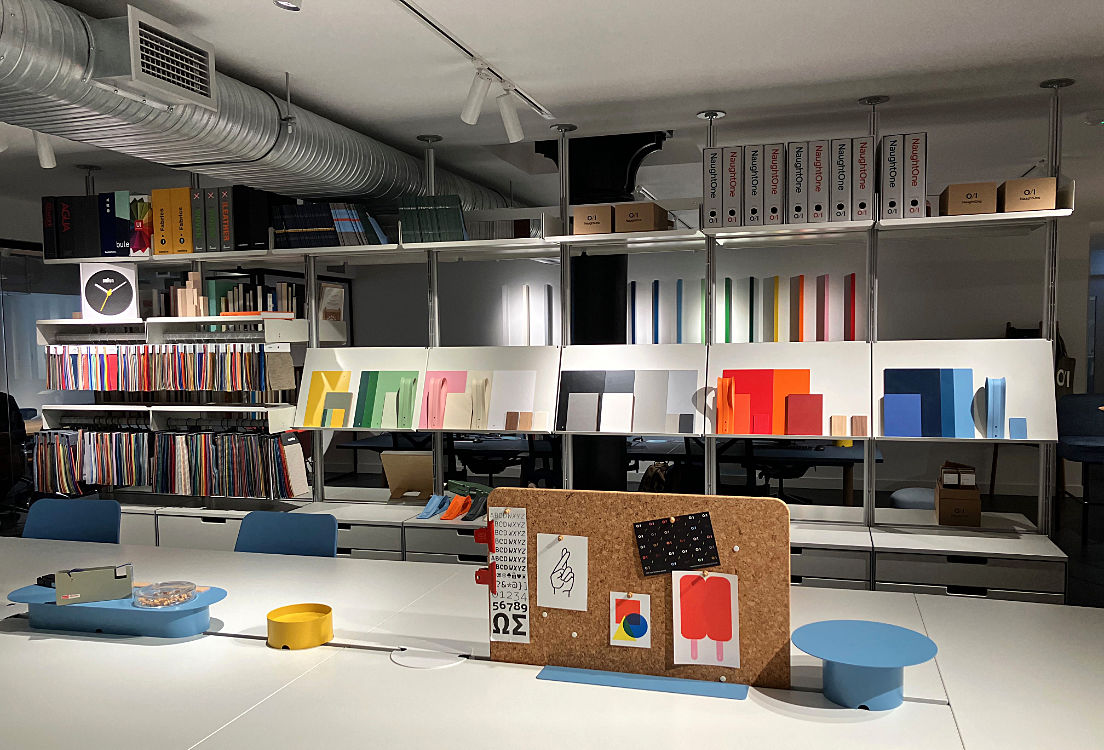
Above: Texaa acoustic fabric colours; Flokk meeting chair; Flokk task chairs and component colours; Modus chairs and storage system; NaughtOne colours for desks and chairs.
It's interesting to note what colours aren't there. Purples, plums, emerald green and millennial pink have gone. No sharp acid colours, no magenta, cyan, or teal. True brown is back for the first time since the 1970s, shading into ochres and russets - also rather 70s. Terracotta is popular. Greens are fresh but not bright. Colours generally combine in restful ways rather than clashing.
The fashion cycle of interiors colours is necessarily slower than clothes. Today's new colours will be ordinary everywhere in ten years. In twenty years they will be out of date and everyone will be trying to get rid of them. In thirty years they will be coming back at the sharp end in a different form. Right now the acid brights of the millennium are completely out, but the 90s are creeping back in - terracotta, ochre, orange, sky blues.
29.05.25 / 01 / church of design
This year Clerkenwell Design Week had a new venue - St Bartholomew's church. Of course I was interested in what this looked like, having recently photographed the interior. I was rather amused to find that it resembled one of my drawings...
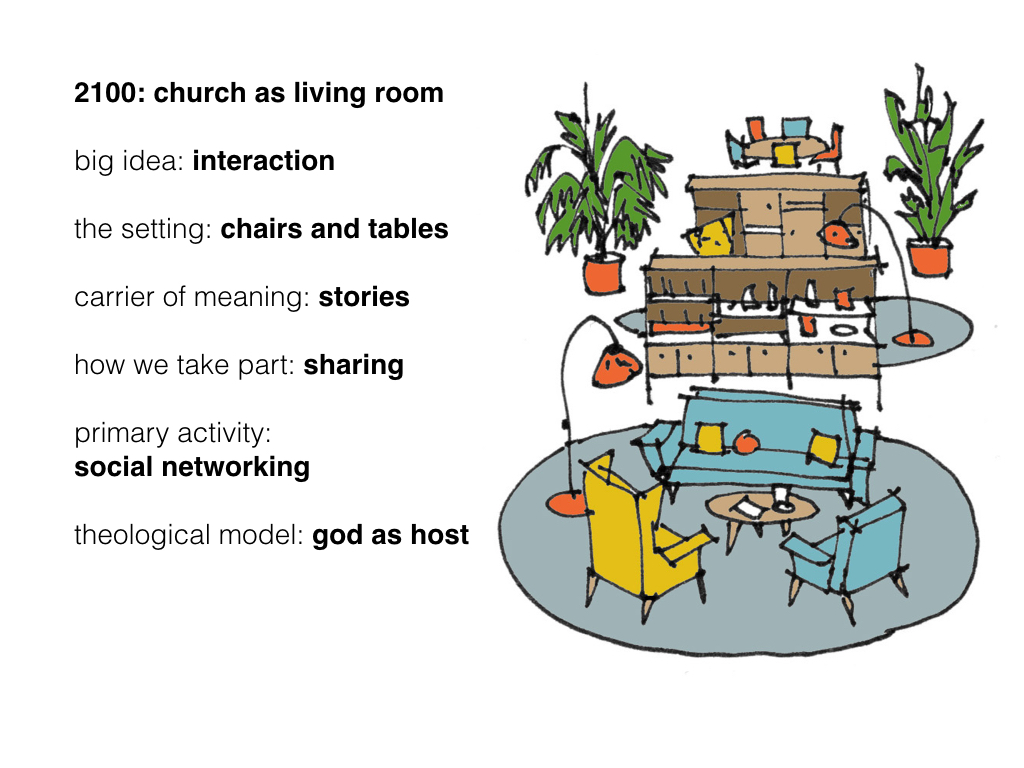
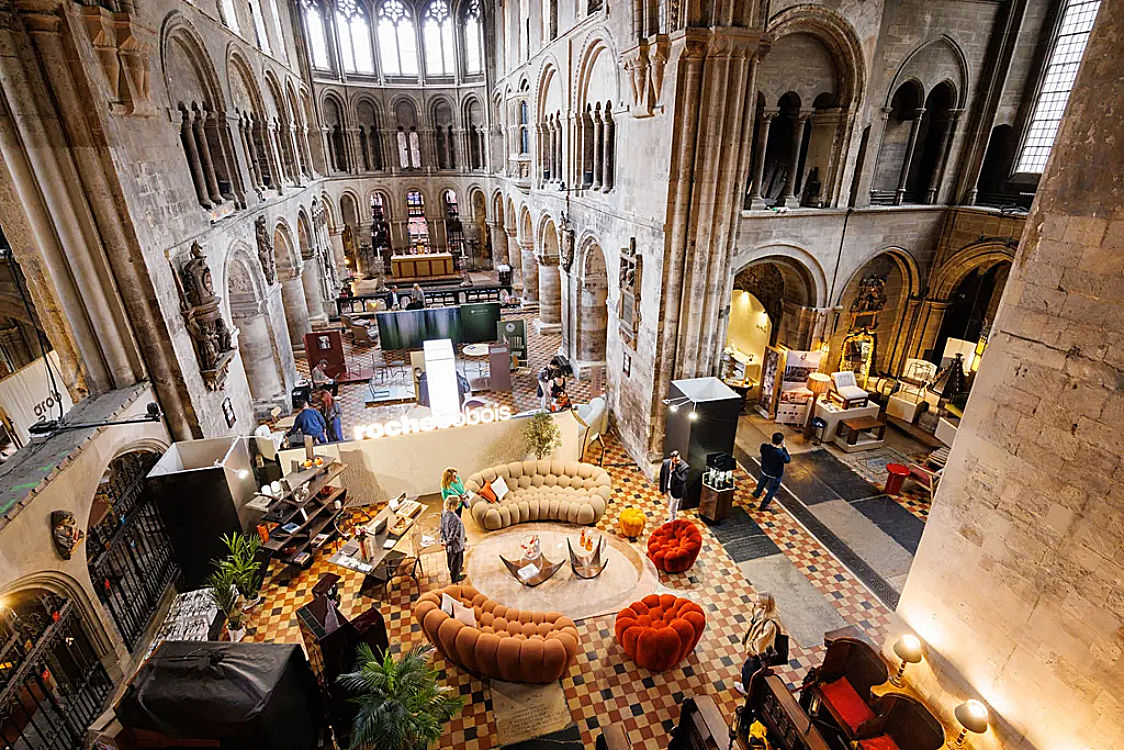
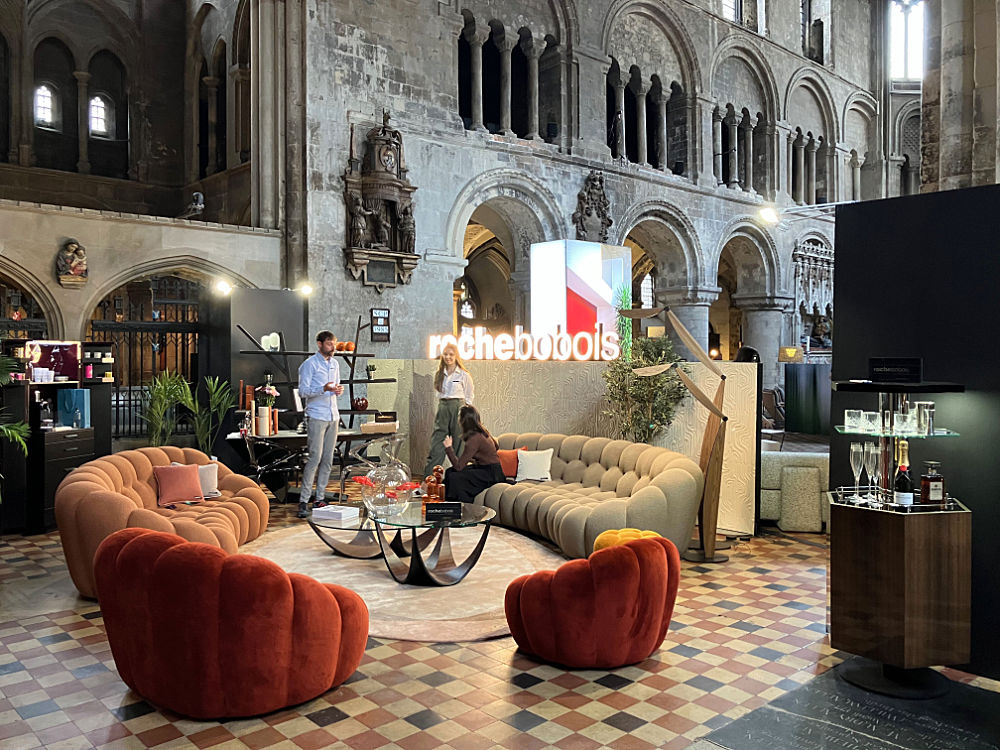
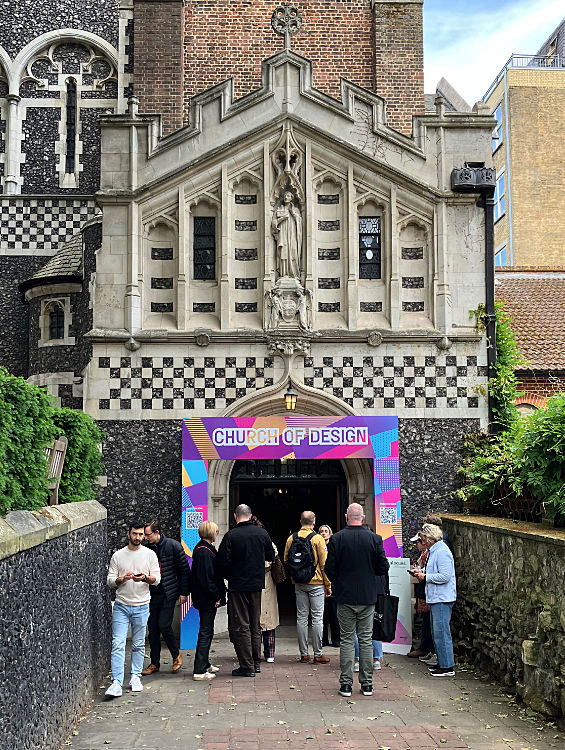
They should retain the Roche Bobois stand, without the sign but keeping the champagne and coffee bars. Why not? Maybe Roche Bobois could do it for free, if there was sales literature and a QR code. It's of mutual benefit. After all, the usual modern wooden chairs are advertising ecclesiastical furnishers to those who are shopping for that kind of thing. We should give them some other kinds of church furniture to think about. The next day I was discussing this with NaughtOne whose chairs are actually in this and other drawings in the series, because the 'living room' drawings derived from a fitout project we did.
06.05.25 / 02 / retrospective blogging again
Now that I can talk about it, I've added blog entries for the first months of this year in the archive, often from notes I made at the time. I haven't revisited last year, at least not yet.
One discovery is that my mother kept diaries from the 80s until 2019. Not novel-type diaries, but plenty of information about significant events and how she felt. It's good to write it all down for future reading.
06.05.25 / 01 / aphasia
My mother had increasing aphasia last year. Using odd words, not making sense. Saying entirely the wrong thing, because she can't find the right thing. Difficulty parsing written notes, three words at a time as if reading a foreign language. ‘Code break’ phrases that trip her line of thought into a repeating loop. Gesturing instead of speaking, especially in the evening. Lost words for objects, birds, plants, things she has known all her life. This combined with her severe deafness and lack of understanding could result in surreal exchanges:
Mum: What is the name of the plant?
Me: Cotoneaster
Mum: (laughs) What, like the name of a dog?
Mum: Do you have a car?
Me: No
Mum: That’s hopeful
(pause)
You can put it round your waist when you go to work
The 'code break' thing first manifested a few years ago when we were doing Lasting Power of Attorney forms. Section 9 begins 'I have read this lasting power of attorney (LPA) including section 8'. So she went back and re-read Section 8. And then she started on Section 9, until it said 'I have read this lasting power of attorney (LPA) including section 8', at which she went back and re-read Section 8. After five times I was going crazy, yelling "You've already read Section 8!!!"
That was a long hard day. It took six hours to get the forms signed. The next day she didn't remember agreeing to any of it and wanted to cancel the whole thing, but the neighbour was coming round to witness the documents and she was too embarrassed to stop him. I couldn't have safeguarded her without the powers of attorney. Do them before you get dementia.
05.05.25 / 01 / bereavement
A death from Alzheimers is not a sudden blow. You suffer bereavement many times by degrees as you lose things.
- When you have to take over your mother’s affairs behind her back, and lie to her every day.
- When you realise you don’t have a mother to talk to about what you are going through, and you’re the parent now.
- When you sit alone in her house, knowing she will never return to it.
- When they tell you she has only a few months to live, but can’t say exactly.
- When she no longer really interacts with you.
- When you get the call at 5:19am to say that she has died.
- When you see her body for the last time and say goodnight.
- When you walk away from the grave for the first time.
So grief comes by degrees also. I haven’t processed any of this, just parked it. The issue is not grief over her actual death, at least not now. It's the bottled-up punishment of over two years of difficult caring, especially the final six months of being an unintentional full time carer.
The whirlwind of arrangements that follow the death and never let up for a month or two distract from the pain. You don’t have time or energy to feel it, dwell on it or process it. Most of what goes on isn’t the sort of thing that triggers grief, not even the stuff about coffins and bodies. That’s all terribly practical or material for black humour. The real triggers are unexpected memories, or absences, which can be in themselves trivial.
As it turned out, part of the business of the funeral was to retrieve the memory of my mother as she was in life, and overcome or set aside the memory of what she became in the last years and months, the broken and distorted pieces.
02.05.25 / 01 / my mother
The unmentioned reality behind the blog after the pandemic was my mother’s declining health, and my increasing care responsibilities for her. I kept quiet about it because I didn’t want to expose her vulnerability. I mentioned it in 2023 after a three month stretch as her full-time carer, but the term Alzheimers was avoided, although those who have dealt with the condition will have understood what was happening.
After that period she was able to manage her life at home again, with daily care visits and long weekends from me twice a month. But her mobility deteriorated last summer, and I had to go and live with her again from August. The intention was to get medical diagnosis and treatment, make new care arrangements to suit, and step away. I thought it would take a month, but it took until December to get workable medication, and then I couldn’t get care support to cover it. So I gave up till after Christmas.
Suddenly one day in early January she was in such pain that I had her admitted to hospital. And then it all collapsed like a house of cards, both mentally and physically. I thought she’d be home in a few days, but after a week it was clear she needed too much care to ever come home again.
The NHS/social services process was to put her into a temporary care home for assessment, after which we would need to find a longer term solution. But then a doctor said, why are we bothering, she only has two or three months to live. Which was kind of shocking as no-one medical had expressed an opinion on life expectancy before. Trouble is, with Alzheimers no-one really knows how long, it could be one or ten months, so we had to carry on with the plans. And then she died in March, only six weeks after the prediction.
Then all the admin kicked in, masses of stuff. Arrange the funeral, tell the wider family and people she knew, register the death, deal with government agencies, bank, utilities, get the will, talk to solicitors, etc. I’m the executor and next of kin so the arrows point at me.
The funeral was a wonderful day, everything went perfectly and the weather was glorious. I had a bit of a break over Easter. It was my first entire week at home since last July. I just enjoyed the quiet and not communicating much, to give my overburdened head a rest. At some point I have to figure out how to resurrect my own life.
09.02.25 / 02 / countach
While we're on the subject, this recreation of the Lamborghini Countach is marvellous. Lamborghini should be ashamed. Their own 50th anniversary version misses the mark by comparison - fussy and cluttered where the original was spare and angular. It's hard to improve on one of the best-looking cars ever designed.
09.02.25 / 01 / history of the motor car
History of the Motor Car (Brooke Bond, 1968) is a peculiar collection. 50 cards running up to 1968 but the first 30 are before 1930. Only five American cars and none after 1930. 22 are racing cars.
The card captions don’t mention styling at all and the appearance of cars very little. They go into detail about the machinery. One has the impression that it was all put together by a vintage car enthusiast into tinkering with engines! This is an emphasis that I notice in other (British) car books of the period - the kind of people who were writing them at that time probably did spend their pre-war youth tinkering with sports car engines.
The key development of the 1930s was that the shell of a car (and therefore its appearance) became separated from the machinery underneath - for reasons of aerodynamics, but then the idea of styling - that the appearance of a car could be changed year on year to stimulate sales regardless of the engineering.
I would have cards for the Chrysler Airflow of 1934 to talk about this, give the Citroen Traction Avant its own card not just an illustration, and maybe add a Tatra as a radical and influential development.
For postwar cars I would add a 57 Chrysler or a 59 Cadillac for the fins and to discuss the business of yearly styling updates. Maybe the Corvair, for its design influence and safety issues. From a British angle I would add the Ford Cortina - the future of the mass market. Perhaps a bubble car! All of the above to be achieved by omitting some of the obscure vintage cars.
In a way the 60s were a competition between the Issigonis idea of the car and the Ford idea. Issigonis was an essentialist - cars should be what they are, should have the most advanced engineering possible, should have the most room in the smallest space, should not be styled for passing fashions. Ford preferred conventional engineering, periodically refreshed styling to give a sense of newness, options packages for personalisation. Ultimately the Ford approach won, because it understood the car to be a social and aspirational object.
This was a subset of a wider battle between Modernism, seeking the essential, functional and unchanging form, and consumerism, seeking social positioning and personal fulfilment. This is something that nags away at me at the moment, because the turn to consumerism has been so damaging ecologically, in a way that a Modernist world of just-enough would not have been.
30.01.25 / 01 / my bristol
In the last few years the Bristol area bus system has changed completely. The old paradigm was linear. One expected to get one bus all the way from start to destination. Changes were undesirable and usually happened at bus stations. The new paradigm is a network. The Metro buses are pseudo-trams - coloured and numbered 'lines' across the city, high frequency, bigger and fewer tram-style stops, and contactless card payment. One navigates by short hops and line changes at intermediate stops. This is enabled by real-time location data to apps and bus stop displays - in the old paradigm one might be marooned at a bus stop waiting for a connection that never comes.
For close to 60 years I've been travelling the same bus route to and from my parents' house, through Patchway, Filton, Horfield, Bishopston, Stokes Croft into the bus station and Broadmead. With every trip to and fro I've watched the gradual changes, a repaint, a new shop owner, a different use, a new building, new street art. This route has been 'my' Bristol. The bus now diverts east through the new developments of the city fringe, and then into the centre on the M32. It certainly picks up more passengers and it's a much better service to the railway station, but I miss my Bristol.
So I decided to take the old route in to see what's changed. The issue is that there is now no one bus all the way in - it's necessary to change twice. The new urban quarter at what used to be Filton airfield pulls everything sideways to serve it - the old main road offers few passengers by comparison.
Once back on route, I found much that was familiar, but I have the impression there are more cafes and eateries and fewer local shops - as everywhere since the pandemic. The 'Japanese listening cafe' looked intriguing, but its reviews have nosedived recently - it seems to have been overwhelmed due to social media attention. I've seen this happen to a couple of places in London.
On the other hand, Plastic Wax Records, which looked like an anachronism a decade ago, must now be feeling secure, but is no longer independent.
Stokes Croft looked a bit tatty, in need of fresh paint. The famous Mild Mild West Banksy (it has its own Wikipedia entry?!) is fading - how do you restore a Banksy - would he do it?
Avon House is being demolished, having loomed boringly over the underpasses for 53 years. The demolition hoardings make it look more interesting than it ever was before. There was a peculiarly dull strain of Bristol brutalism, heavy and monotonous cladding panels applied like wallpaper across entire buildings and even groups of buildings without any break or modulation. It was as if someone had tried to invent a style for Bristol - I suspect only one or two architects' firms were responsible - but it damaged the place. Half of it has gone already, before I got round to photographing it as a thing (a boring thing).
Also going, unfortunately, is Rupert Street car park. It's the first continuous spiral car park in Britain, but the reason people wanted it listed was really because it looks good. All it needs is the crap clearing away from around it to reveal its form. Bristol's Guggenheim.
And so to a quick walk around the centre. All evidence of slave trader Edward Colston, after whom so many things were once named, has been pretty much removed. Colston Avenue and Colston Street keep their names, for the moment - how long? I had a coffee at Caffe Moka, the best located coffee shop in Bristol and authentic Italian (the coffee is divisive!), before catching the bus home by the modern route.
20.01.25 / 01 / design approaches
Three ways it can go:
- You know almost immediately what it should be, have the whole thing in your head in the first ten minutes. You just have to guide everybody to your solution.
- You grope around blindly trying to capitalise on happy accidents. Putting together a jigsaw puzzle without a picture to guide you.
- You know pretty much what it should be but struggle to land it. You started in the wrong place with fixed assumptions. You can’t get a solution without discarding them. But you don’t know what they are.
I so often do number 3.
15.01.25 / 01 / pumpkin
Just messing with pumpkin colours. I bought a couple of jackets that are in the pumpkin colour space.
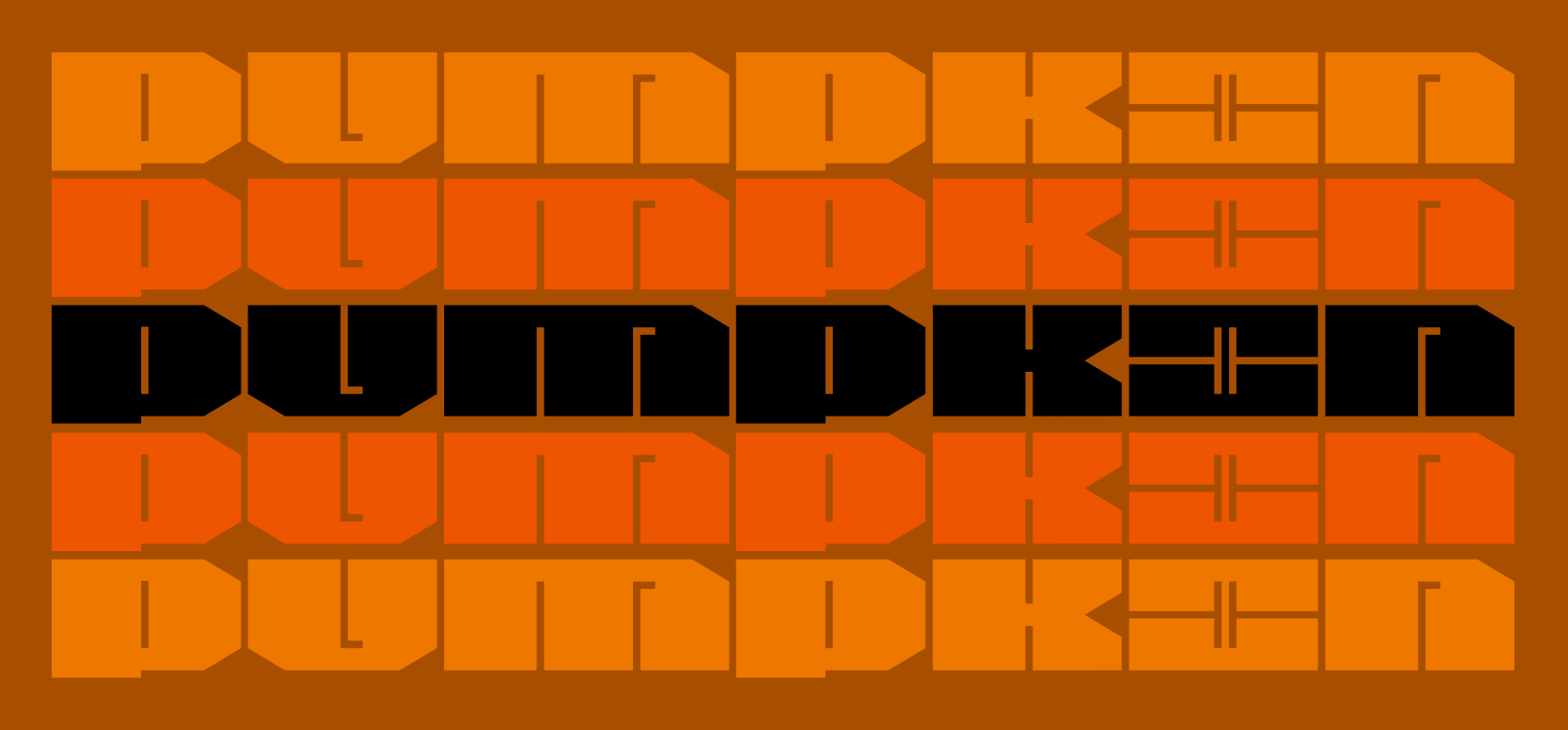
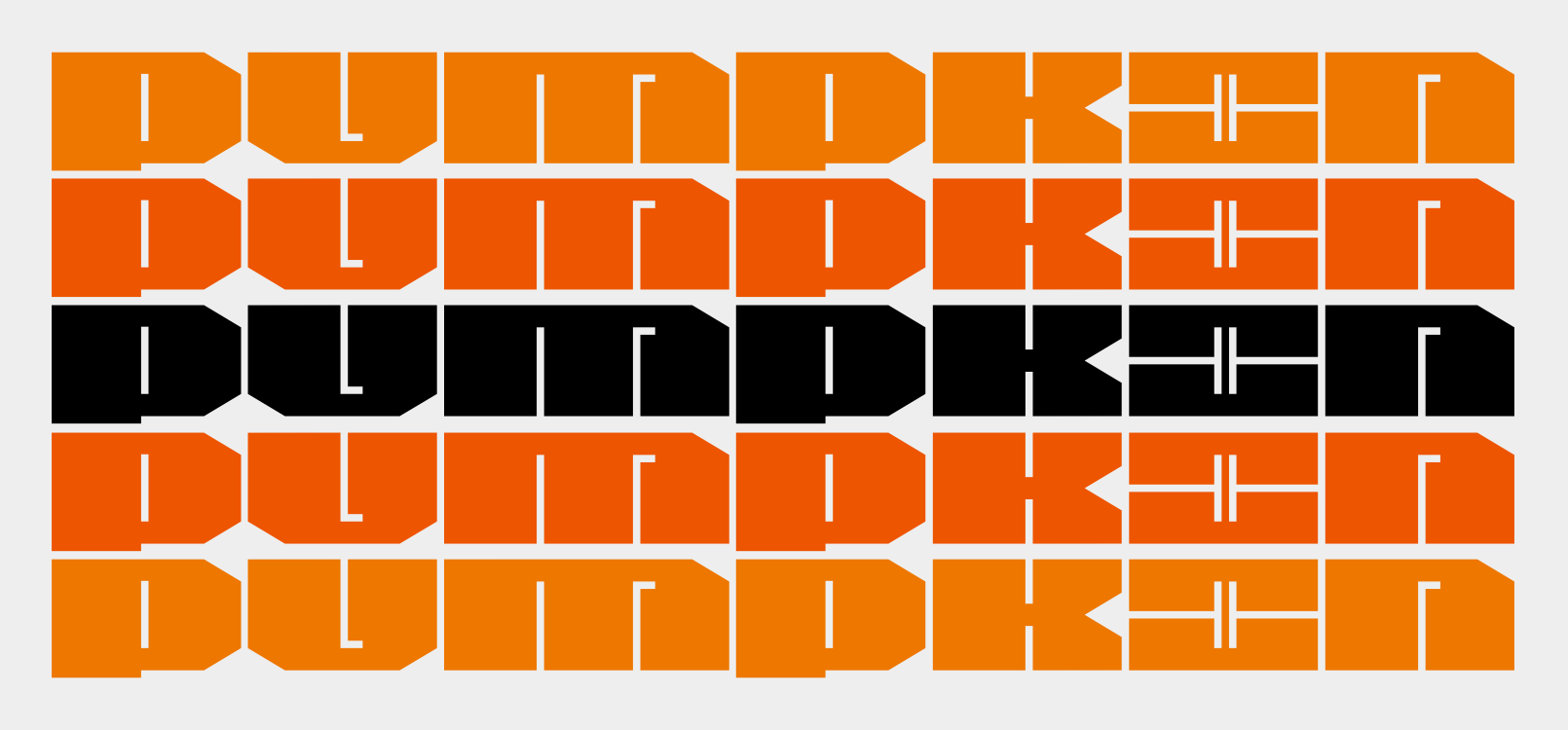
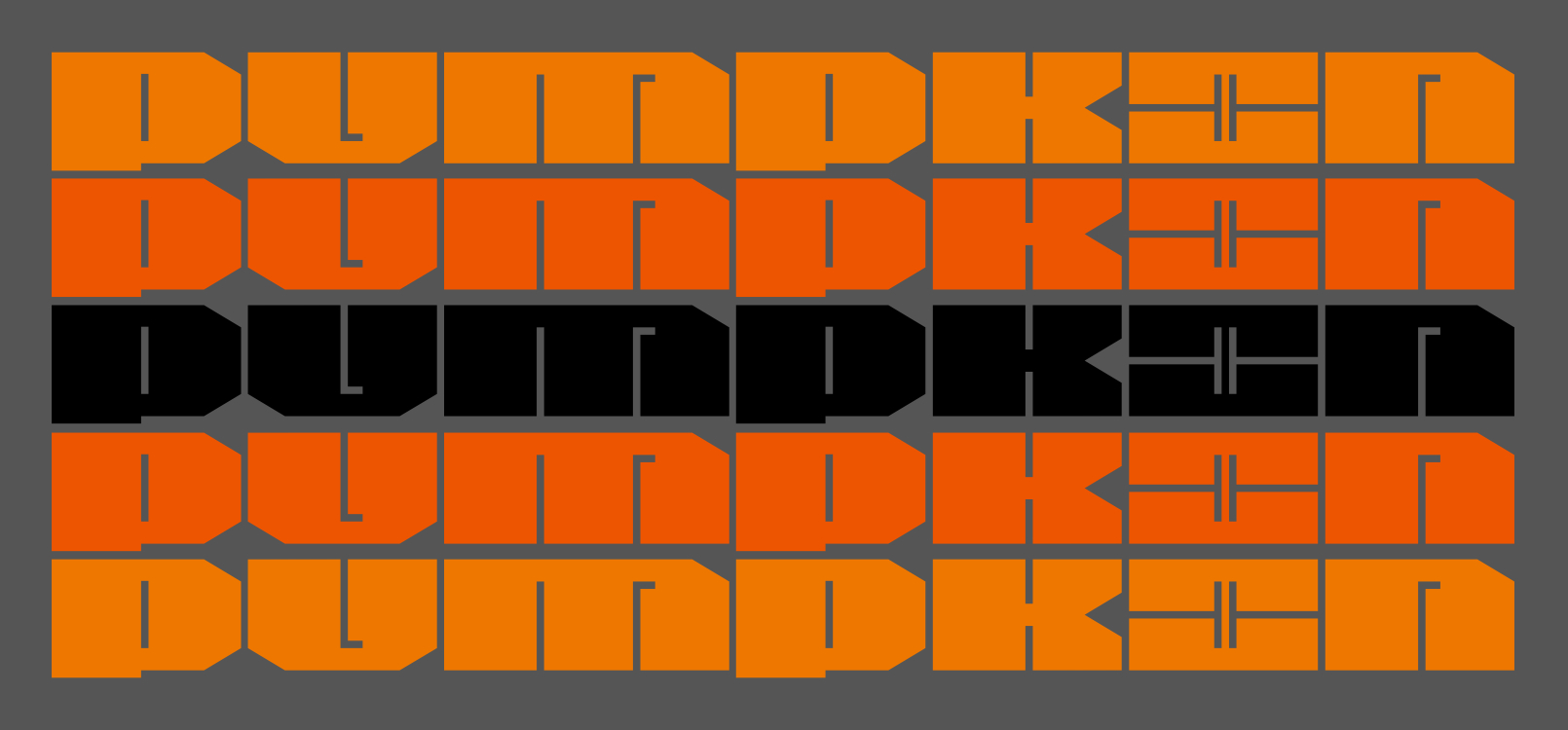
02.01.25 / 02 / lights in the darkness
Coda to the preceding: During the winter of the pandemic, the enforced lockdown of Christmas 2020 and early 2021, many people kept their outdoor Christmas lights on until February. We needed the cheer on our quarantined night walks.
02.01.25 / 01 / christmas isn't over yet
I’m always disappointed by people who put up Christmas decorations at the beginning of December (or before) but take them down on 26th or 27th December. Christmas isn’t over yet! Somebody should tell them. It runs to January 5th, followed by Epiphany on the 6th. In my childhood Christmas decorations went up two or three days before Christmas and came down on 5th January. (Naturally it was considered 'unlucky' to leave them up longer.)
The increased celebration of New Year has cut the Christmas season in half. In England New Year was on March 25th from the 12th century to the middle of the 18th, and most European countries had similar dates, so Christmastide was not interrupted by another, secular, festival. And commercialisation - the lights go on for the shopping season, and once the gifts have been given there’s no further point. Nobody knows what else to do with the 12 days, except the Boxing Day sales and the New Year sales to clear all the unsold Christmas stock.
Advent is undermined as a separate (and serious) season by the premature focus on Christmas (for no other reason than to make you shop). Advent calendars don't help, because they end on Christmas Day. It gives the sense that the season is December and Christmas Day is the end of it.
We need to do a Christmas calendar, on the lines of the Advent one, to mark out the 12 days and Epiphany with doors and gifts. It could start Christmas Eve. The Epiphany door should contain three gifts! A physical reminder that it isn’t over yet until Christ has been presented at the Temple and the Magi have visited. You would think that the capitalists would see Epiphany as an opportunity for gift-giving too - obligatory to buy three of everything!
31.12.24 / 01 / haptics
This blog entry has been hanging around unresolved since the summer, but maybe it's time to publish the half-formed thoughts to get it recorded. I was thinking of stuff one carries in a pocket or bag, and uses for the feel of it - rosaries, wood bears, pebbles. My thing is rosaries or similar prayer beads - I’ve never really figured out how to pray on them, but counting the beads through my fingers is calming - can send me to sleep sometimes. There’s a certain size and weight of bead that works, it should be just round beads of different sizes so you can feel the divisions without looking.
Maybe one could throw in a Braun calculator - the ET55 has buttons with a slight click that feel good. Or a Parker Jotter - the perfect ballpoint, always works immediately, the engineered click of the button. I use my grandfather's 1963 one.
Give yourself nice small things, eg wallet, business card holder, pen, water bottle etc. Well crafted, good to look at and touch. Finding pleasure in small luxuries, not necessarily expensive. Choose things that have longevity and wear well - enjoyable ageing not just tatty and grubby. How many things get discarded because they look bad/embarrassing before they have worn out?
We often do it the other way - spend on big luxury items but have cheap small things, so what’s closest to us all the time is cheap.
21.12.24 / 02 / rail symbol 2
When the effective renationalisation of the railways was floated in 2021, it was said that the logo of the new organisation would be a modified version of the British Rail double arrow. This was welcome but the mention of revisions was concerning, given the untouchable elegance of the original. I needn’t have worried. The update is a very subtle re-proportioning by Nick Job that makes the symbol more usable and less prone to bad executions. This is a heartening tale of an enthusiast who makes a difference. Job was concerned by the frequent errors in the drafting and use of the symbol, even in official documents and signage, and approached Network Rail with a proposal for respecifying it. This was well-received and Job got his dream job. Now he really needs to update his websites...
The manual revives the old elegance of the British Rail Corporate Identity. Amusingly, Section 1.7 Incorrect Usage carefully forbids all of the non-standard uses that actually happened under British Rail, even the ones that had official permission!
The name change - Rail Symbol 2 - is significant. It was the logo of a particular organisation. When that organisation disappeared, it did not vanish as expected. It had become a symbol for railways and stations due to its use on signage. Nobody could think of anything better to replace it that would just mean ‘railway’, and it would cost too much to replace all the signs anyway. So it remained everywhere, as a kind of ghost of its parent organisation, neither living nor dead, with no certain future. Now calling it Rail Symbol acknowledges what it has become, not a logo but the symbol of railways in Britain, regardless of organisation or ownership.
21.12.24 / 01 / rail alphabet 2
A random update to an old blog entry. The new Network Rail signage by Spaceagency and Kubel/Calvert as flagged here is being installed across the network with surprising rapidity, as the renationalisation of the railways proceeds. Bristol Parkway was done in 2023 but I’m always in too much of a hurry to snap the new stuff until now.
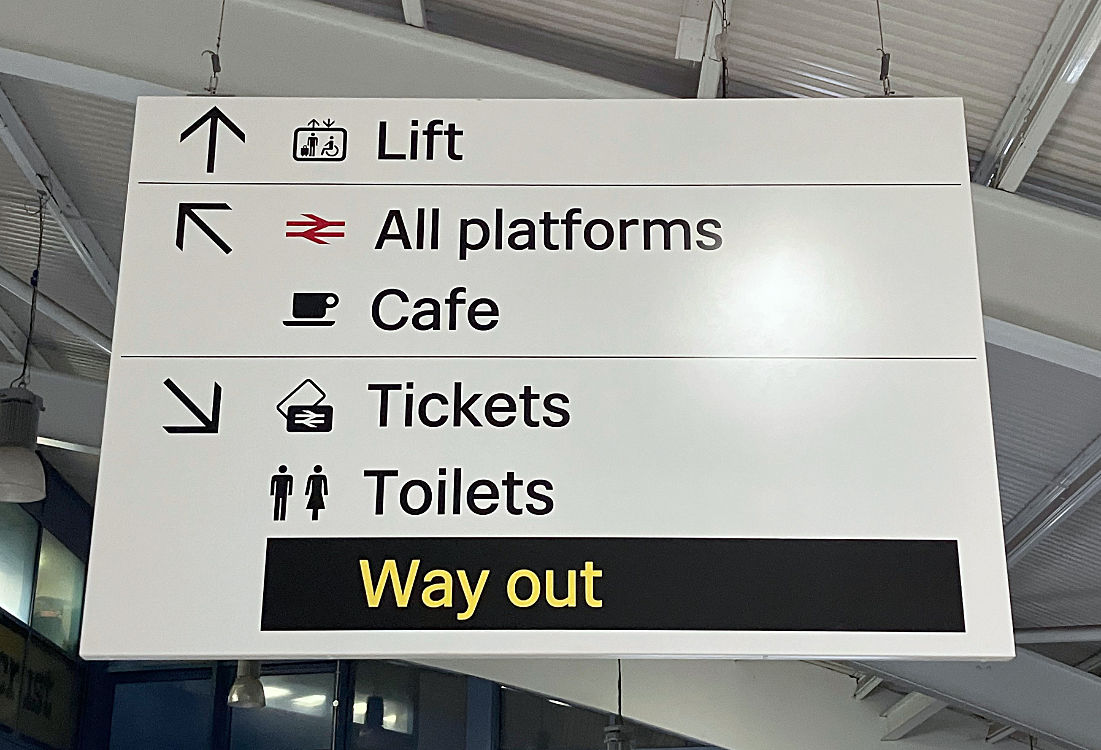
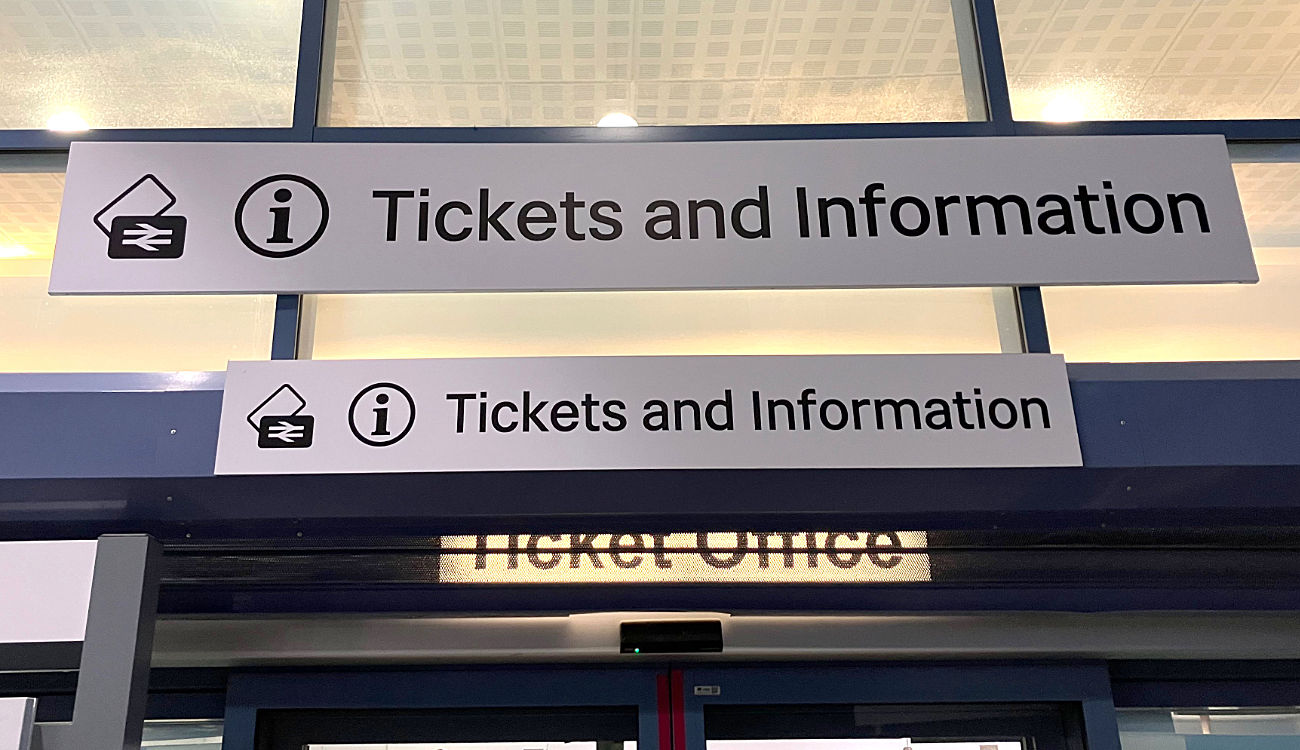
Margaret Calvert’s Rail Alphabet 2 comes up good with its outstanding clarity. The new sign formats improve on the sometimes cluttered British Rail plank system - our understanding has advanced in 60 years, even though the original was radical in 1965. We don’t need an arrow for every line, just group things in the same direction under one arrow - I think there’s a maximum number of four per arrow. In the second picture the offending non-standard Arial is still hiding underneath!
20.12.24 / 01 / a kind-faced christ
Back in July I was photographing churches in the City of London, including St Andrew by the Wardrobe. I found it open unexpectedly, so I was too busy getting my shots before somebody came and got in the way / threw me out, to pay much attention to the content of the icons. Later, reviewing my photos, I was surprised by the kind face of the Christ.

Ordinarily this ‘Christ enthroned’ image shows him as a stern majestic figure. In the Byzantine tradition icons tend to an imperial feel - these people are bigger, holier, sterner than we are. They don't smile. But the Coptic tradition is more humane, especially in its current neo-Coptic form - almost cartoon-like with its abstraction and big eyes. The big eyes are an authentic and very ancient Egyptian tradition - notably in the funerary portraits of Roman times which are a major root of Coptic iconography. One could almost call it naive, but I also think of the big-eyes tradition of manga. Which shades into kawaii - are these icons a little bit kawaii? Is that a bad thing?
The icons are by Fadi Mikhail, an Egyptian/English painter. He seems to be the current master of neo-Coptic art. His icons are quite a contrast to his personal Post-Impressionist work. His Essex accent is not what you’d expect! One feels that an iconographer should have a deep, grave voice with a Middle Eastern accent.
14.12.24 / 01 / advent
The New Testament starts with hope, like Star Wars [Episode IV A New Hope]. It tips us straight into Christmas, all babies and angels. The Herod thing seems like a momentary interruption of the wonder-filled narrative. The light has come into the world.
But for most of humanity the 400 years of silence between the Testaments was ongoing. No word from God, no angels, no star, no light. The only people of consequence who noticed that something had happened were the Magi, and their well-meaning attention nearly screwed the whole thing and cost many innocent lives. The silence wasn’t broken for another 30 years.
Maybe we should start The New Testament immediately after Malachi, with 400 years of empires and atrocities. Kester Brewin suggested that we should put blank pages into our Bibles, so that we feel the weight of the waiting and longing that one day there will be another prophet, or even a Messiah.
And when the thing does happen, let it be as a footnote to the continuing blank pages, just small print, very hard to read. Simeon and Anna had turned the blank pages of their lives to the end before the footnote was written on them.
And put in too the blank pages representing the missing years of Jesus’ life before his public ministry, the long years of other Herods and other Caesars.
Let us understand that Christ was born in a world like ours, where hope is hard to find and risky to express, and doesn’t get fulfilled for decades, and then only in an apparently disastrous way that seems to lead nowhere.
And even when the flame springs up again it will be centuries and many deaths before it becomes established history that can make out it was inevitable all along.
So the context of Advent is the dark night of the world. The light shines in the darkness, and doesn’t seem to make any difference. The word comes to the people, and the people don’t want to listen. But the light and the word will endure.
03.11.24 / 01 / retrospective blogging again
I've been filling in the blog from late 2016 through 2018 - at last some entries for 2017. This was the post-Facebook hole where I had abandoned Facebook but hadn't picked up the blog again. There are still thin patches but at least the blog feels continuous again. It seems strange now that I ever let it drop.
29.10.24 / 01 / workplace curators
Implicit in notes on sustainability is the idea that workplaces need curators, as part of their sustainability framework.
The task of the curator (among other things) is to blend new and retained items in a way that supports the narrative of how the organisation is evolving. There is a sustainability narrative, how we reuse, repair and remodel old things, but there is also a cultural narrative, how a workplace and organisation evolve continually, balancing the old and the new, rather than freezing for ten years and then needing radical change to catch up.
Facilities management has tended to focus on maintenance and functional change, within what currently exists - the new copier or task chairs, the workgroup moves and changes. Curator is a cultural job, beyond the utilitarian.
It asks:
- Who are we and where are we going?
- How do we move that way with what we’ve got?
- When we replace, do we do like-for-like or something different?
- What new things do we need, and how will they evolve in turn beyond answering one need?
- What makes a workplace culture readable and ownable?
- How do we evolve ‘tradition’ so that people feel grounded during the process of change?
- How do we reduce the need for disorientating 'great leaps forward', or at least bring everyone to that point together and prepared?
28.10.24 / 02 / great disasters
The great disasters happen when every point of failure in the system fails. If only one point had held it wouldn’t have happened, or the loss of life would have been far less.
In that sense every great disaster is actually unique. It will never happen that way again, that precise combination of incompetence, misfortune and circumstance. That is why the great disasters fascinate us, because we have a sense of horrified wonderment at their unfolding, stranger than fiction. They often end up as plays and movies after a (barely) decent period for grieving, because they have compelling plots and action (just insert young lovers in peril).
Disasters bring in their wake huge rafts of legislation and practice, driven by politicians who must be seen to do something. To "make sure that such a terrible thing can never happen again". But it probably won’t anyway. Something else unforeseen will happen. The iceberg never strikes twice. And if it does, the ship won’t sink. Or the rescue ship will arrive in time. And so on.
In a way, the real value of the post-disaster legislation is to prevent the lesser disasters which happen repeatedly. The systemic changes catch a lot of things that in themselves are too small and uninteresting to break political inertia, the ‘shit happens’ kind of things.
28.10.24 / 01 / SI AW
A couple of Situationist quotes with obvious relevance to alt worship:
As soon as the leader of the game turns into a Leader, the principle of hierarchy is saved, and the Revolution sits down to preside over the execution of the revolutionaries. We must never forget that the revolutionary project belongs to the masses alone; leaders help it, Leaders betray it.
Raoul Vaneigem, 'The Revolution of Everyday Life' ch. 6
The most pertinent revolutionary experiments in culture have sought to break the spectators’ psychological identification with heroes, so as to draw them into activity by provoking their capacities to revolutionize their own lives. The situation is thus designed to be lived by its constructors. The role played by a passive or merely bit-part playing 'public' must constantly diminish, while that played by those who cannot be called actors, but rather, in a new sense of the term, 'livers', must steadily increase.
Guy Debord ‘Report on the construction of situations’ 1957
19.10.24 / 02 / packing
I’m always bemused by those speeded-up luggage-packing movies on luggage-selling websites where a load of nice things wriggle around and all pack nicely into a nice messenger bag/suitcase/wallet.
Finisterre Freitag Freitag (note the packs of eggs)
How come it isn’t like that for me? My things don’t fit, they make unsightly bulges. Where in the movies are the large and awkwardly shaped British plugs and chargers? The cables associated with all the gadgets? The Apple USB dongle? The bottle of handcream or disinfectant gel? The large headphones in their case? The shopping bags? The cutlery set? (You have a stainless steel cutlery set so no more disposable cutlery, right?) The movie stylist must have spent days finding all the right things for that exact fit.
Packing cubes - somehow I’ve managed to get through life without them. But the thing the packing movies almost never show is the empty bag that you will put dirty clothes in.
19.10.24 / 01 / simulacrum
I was in a record shop in Greenwich a few weeks back. What I found was that a lot of the vinyl that looked ‘original’ was a reissue, but you would only find out by examining very carefully. The ‘reissues’ that weren't quite like the original album (dodgy dance remix track, compromised graphics) were actually from the 80s/90s so were older than the ‘originals’. And then there were originals that really were original, which tended to be too worn to be tempting, and worth least of all.
So I thought, what happens when everything in the record shop, and the shop itself (and maybe the staff), is a simulacrum? And since we’re dealing with mass-produced objects does it matter? Especially when the new ‘original’ is remastered from the original studio recordings and on better vinyl?
Still I'm haunted by the possibility that the future will be exactly like the past, only more so.
04.08.24 / 03 / leading from the back
extrovert
starts at front of room
talks loudly
figures it out as they go
grabs leadership first then delegates later
introvert
starts at back of room
says very little
until they have understood everything
follows at first but gradually takes control
I've always been the latter, it's always been a problem. People think "Who is this guy? Why is he here?" But later they will all obey me.
04.08.24 / 02 / good plus good plus good equals good
At the time we opened, natural wine, Japanese food, and a so-called audiophile sound system didn’t really sound like a very put-together concept, but we just thought good plus good plus good equals good. We concentrated on the stuff that we enjoyed, and what we believed in, and put it together in a way that we felt made sense.
04.08.24 / 01 / listening room
So Jonny beat me to it. Devun Turnbull's Listening Room as church. It even has its own incense burner. Of course churches should do this, at least as a component of the offering. Creating an ambience at all times, intensified as the sole focus of specific listening sessions, doing the music for other kinds of worship.
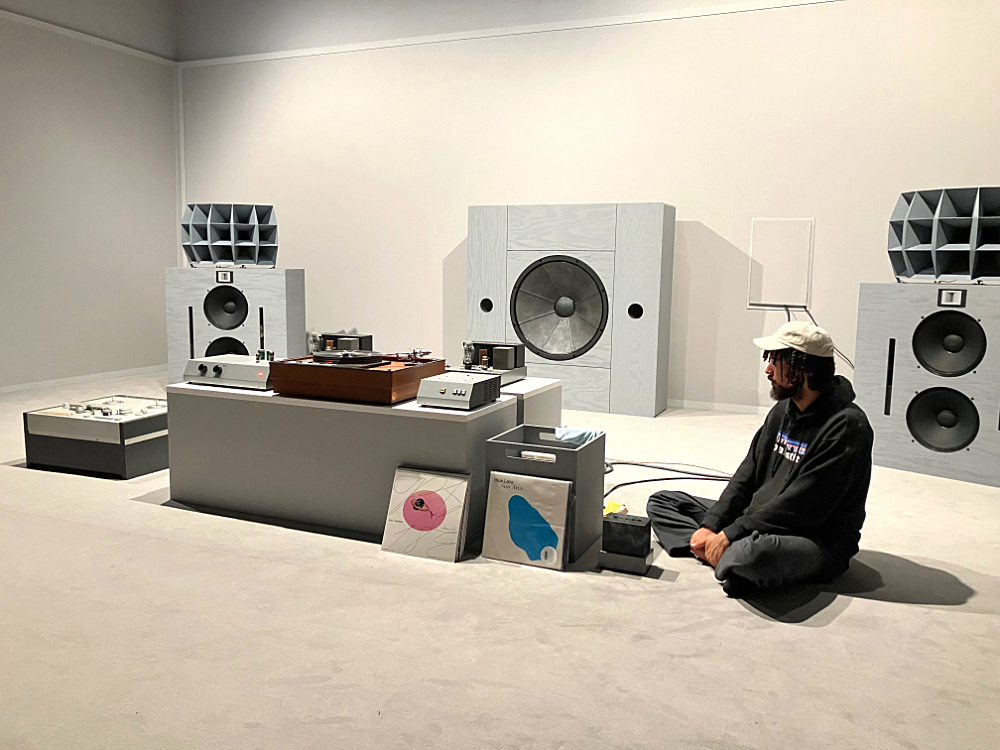
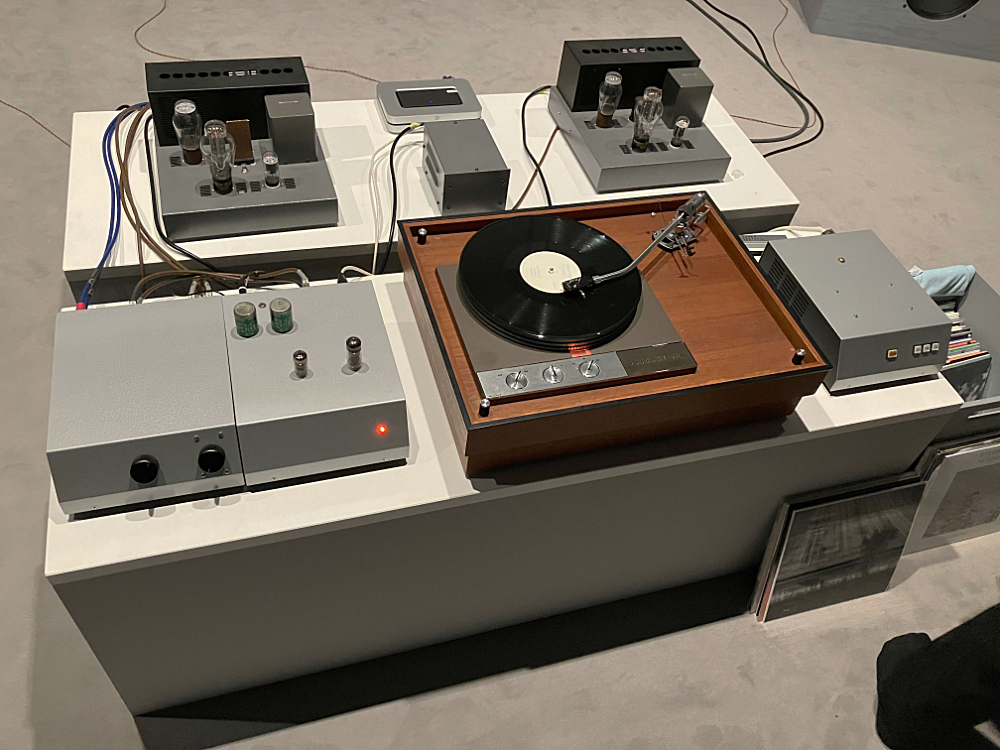
It isn't necessary to go as far as hand-made equipment. Turnbull himself is easy about this in interviews, not a purist, learn how to get the best out of what you have. Churches have their own unique acoustics, get the right speakers in the right places, play with volume and reverb. Find the music that works, even if it doesn't sound like it 'ought' to do.
This also links in to something I've been thinking about for years, about churches as ambient drop-in spaces for rest and meditation. Churches as a focus for the vinyl renaissance. Get a sound system in and someone to curate the music.
Having a membership for 180 Studios is really paying for itself here - I can drop into the Listening Room at will for an hour or so.
21.06.24 / 01 / burolandschaft
Just to illustrate the crazy freedom of 1960s-70s burolandschaft (see the first image here).
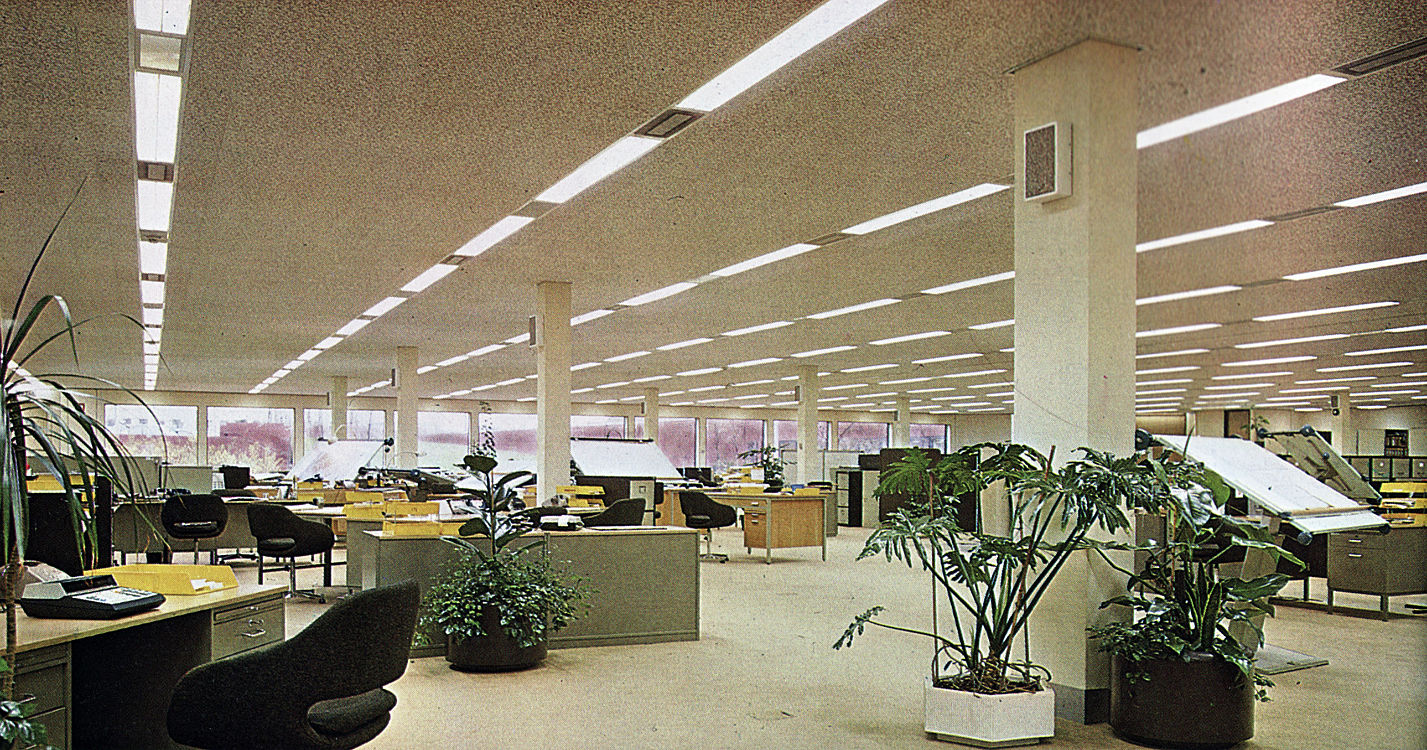
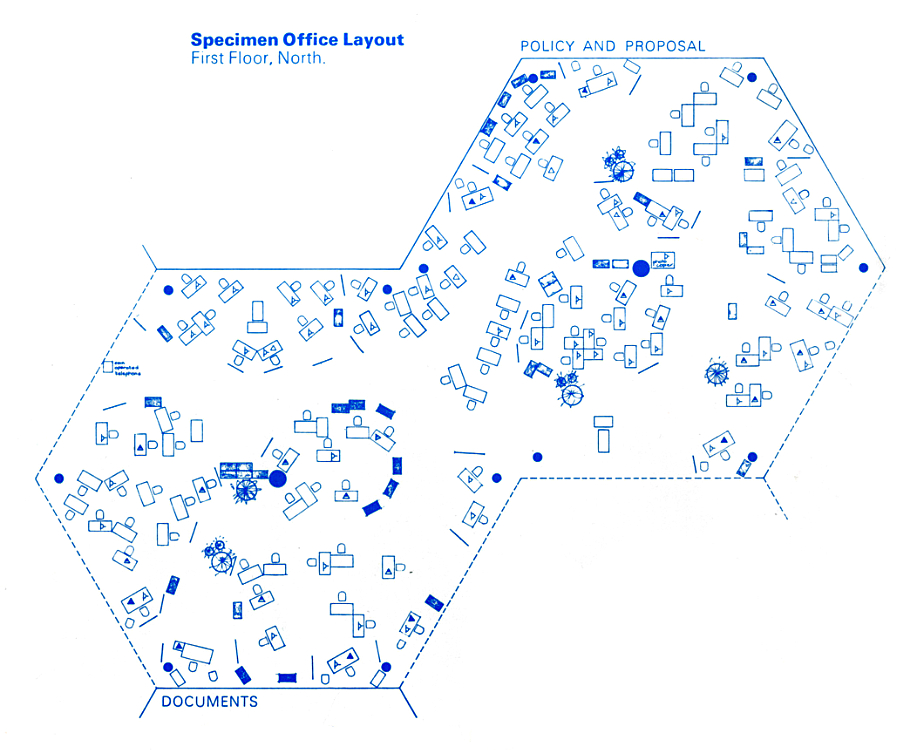
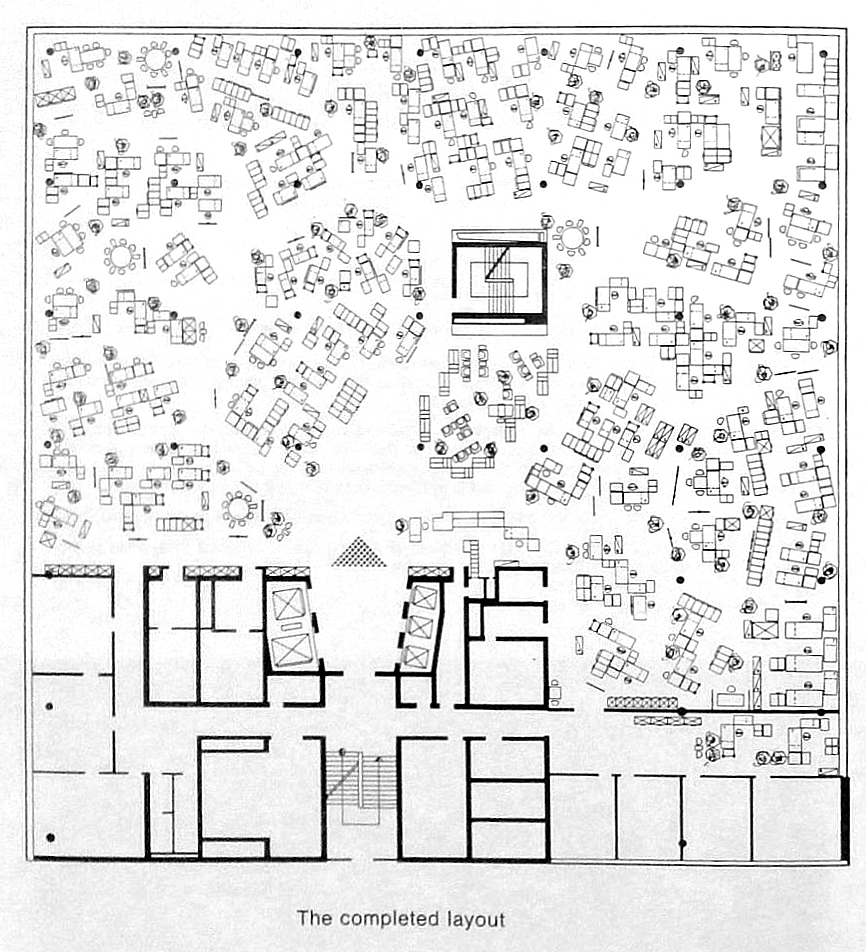
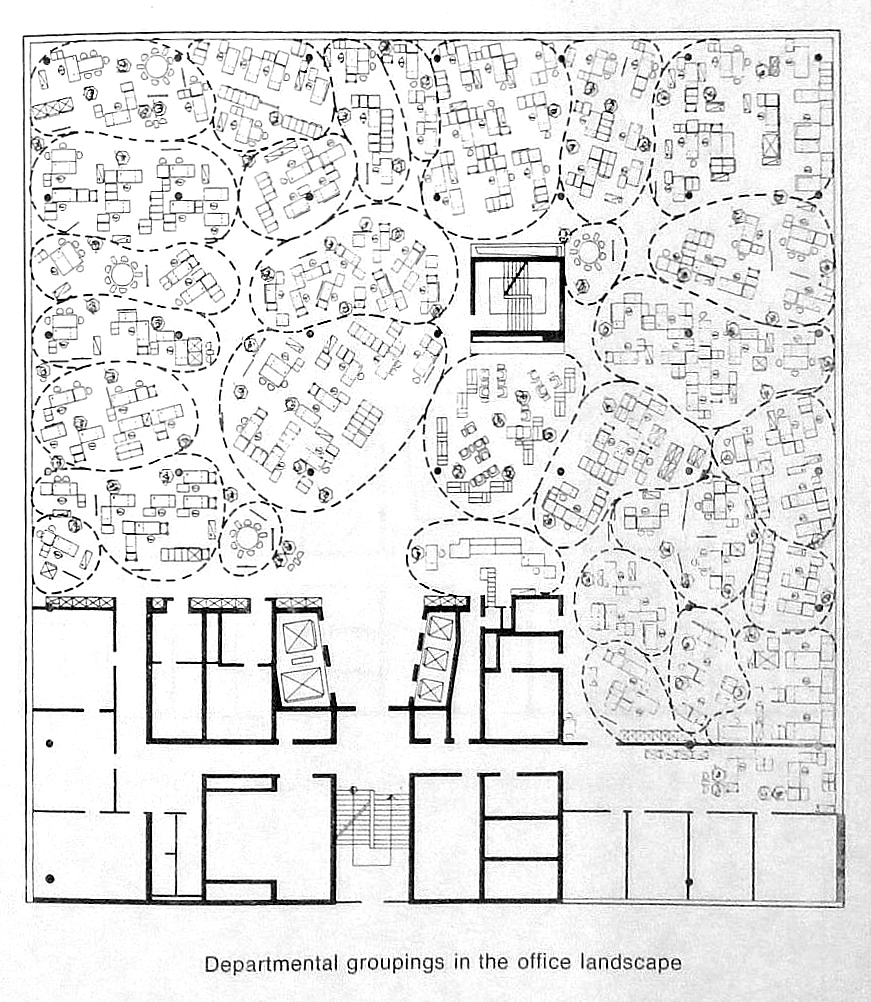
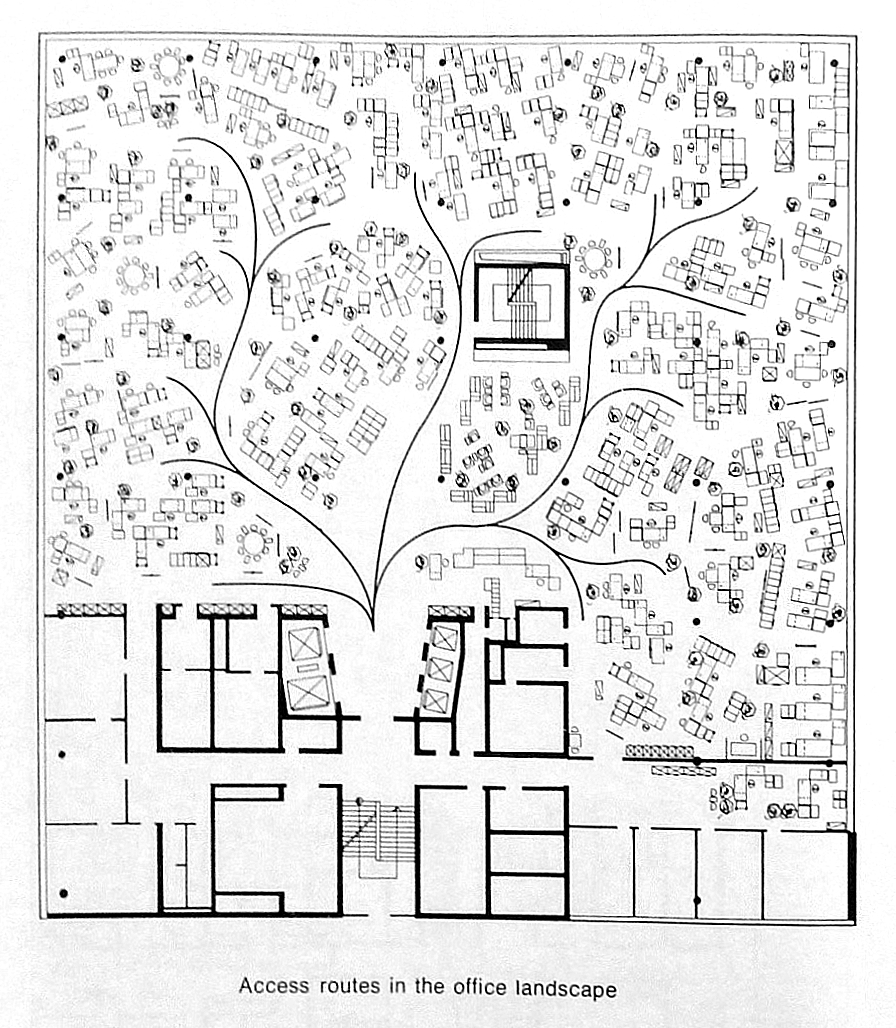
The apparent chaos was tuned for efficient communication and workflow. Desks were turned so that workers did not face one another (no monitors to hide behind in those days). Obvious hierarchies were abolished, even managers sat in the open office (maybe with a meeting table and more screens). Sight lines were restricted by screens and plants to avoid the sense of being adrift in a huge space.
One innovation was the constantly available teapoint and breakout space. It now seems odd that such a thing had to be invented, but previously refreshments had been delivered to desks on trolleys (easier when everything was in straight lines) or workers went to a canteen at set break times. The inventors of burolandschaft recognised that informal breaks enhanced productivity.
Buildings designed for burolandschaft had very deep plans with minimal obstructions, uniform carpets and uniform lighting, so that anything could be anywhere in any arrangement and moved any time. This had downsides. People spent all day deep in artificial light and artificial air, barely able to see outside. The combination of chaotic layout and uniform background was disorientating. Circulation routes were vague and shifting. Without stable and defined primary circulation, how to sign and light fire escape routes? How to sign where workgroups and departments are?
Reactions varied. In Germany workers' councils rejected the open office in favour of cellular workgroup rooms. In the US the Action Office furniture system was intended to enable a version of burolandschaft, but was perverted into the horrors of the cube farm. In Britain there was a reaction towards shallower plans which gave occupants views out, and more architectural articulation to break the monotony and discipline the work groups. This was soon overtaken by a demand for deep open offices for financial services, with densely packed rows of desks tied to underfloor power and data grids. The plants and irregularity went and have only recently returned.
11.06.24 / 01 / workplace evolution
The points under 'simplicity' in notes on sustainability below led to some drawings. It's interesting how workplace layouts are moving towards the freedom of 50 years ago as we uncouple from the underfloor power and data grid and the tyranny of the desk.
05.06.24 / 01 / rediscovered records
I found some records in a wardrobe at my mother's house, hidden under a heap of scarves. I thought they were lost long ago. I must have left them behind when I left home in 1984, they got put in the cupboard... and somehow not noticed for 40 years! It's good to have them back. Of course it's unnecessary to actually play them nowadays...
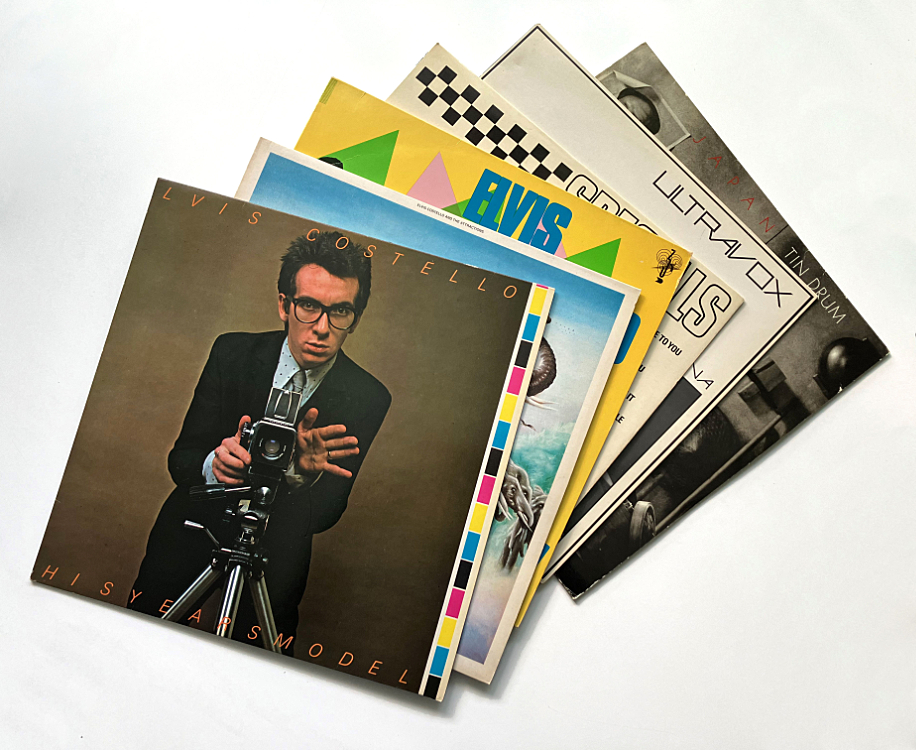
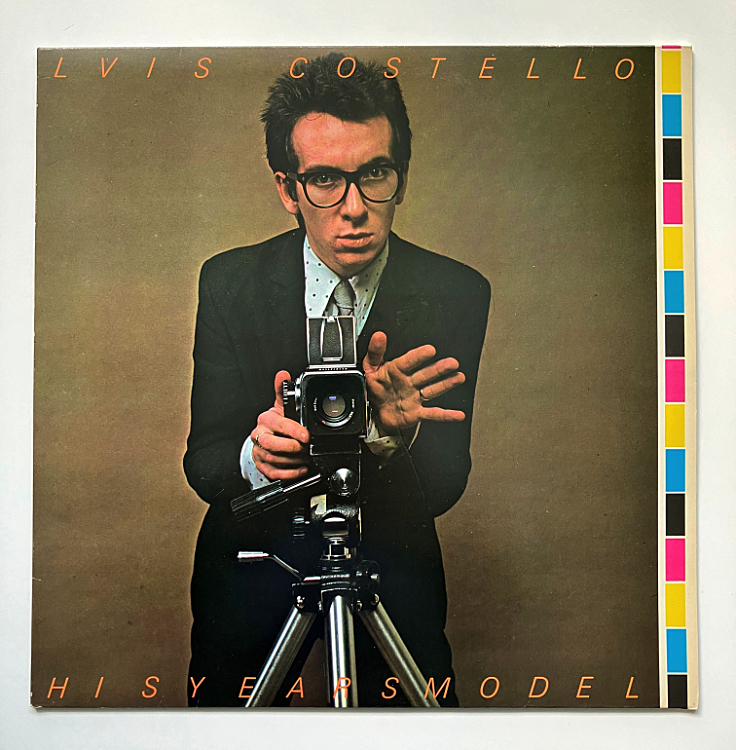
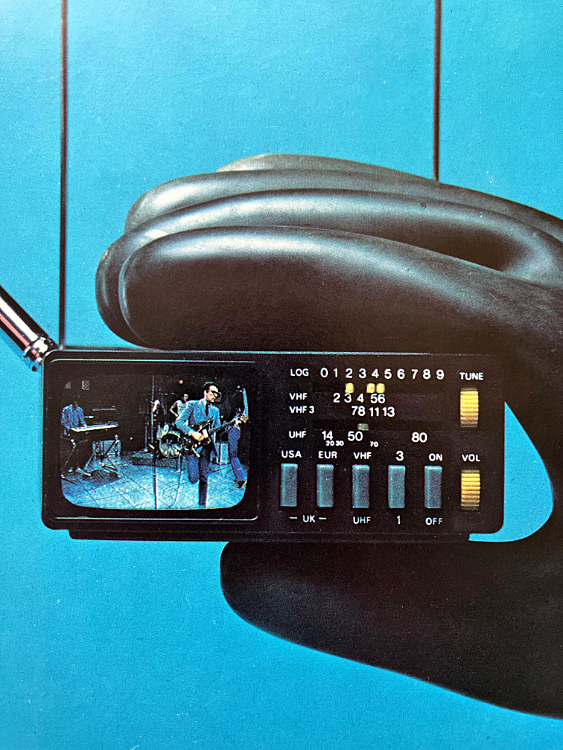
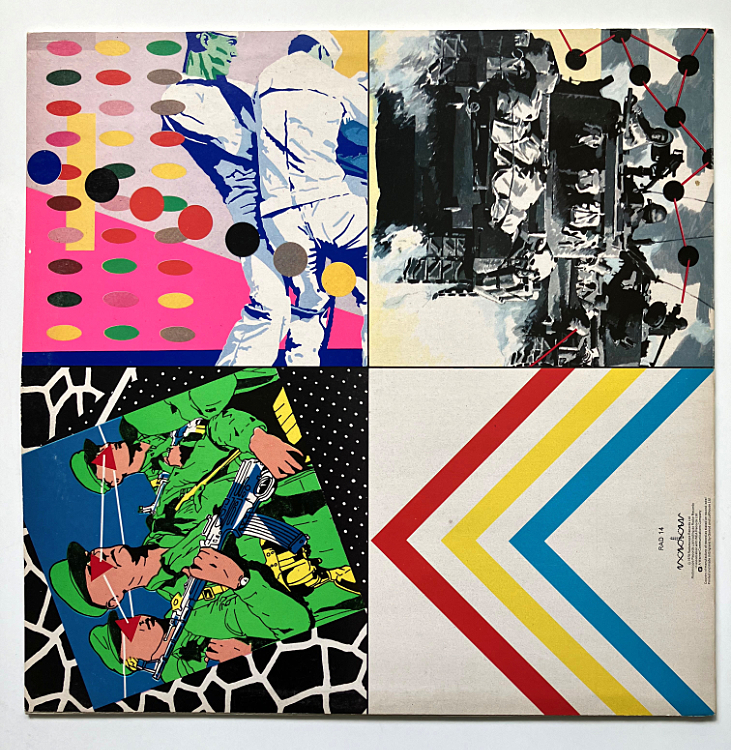
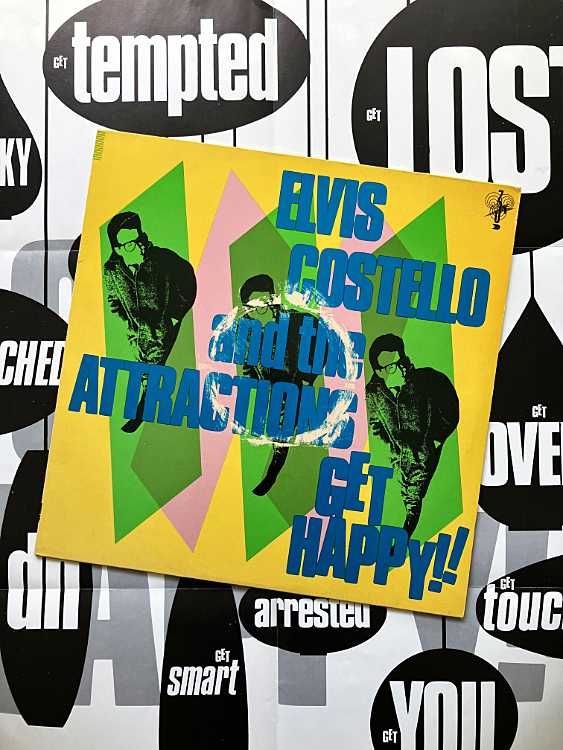
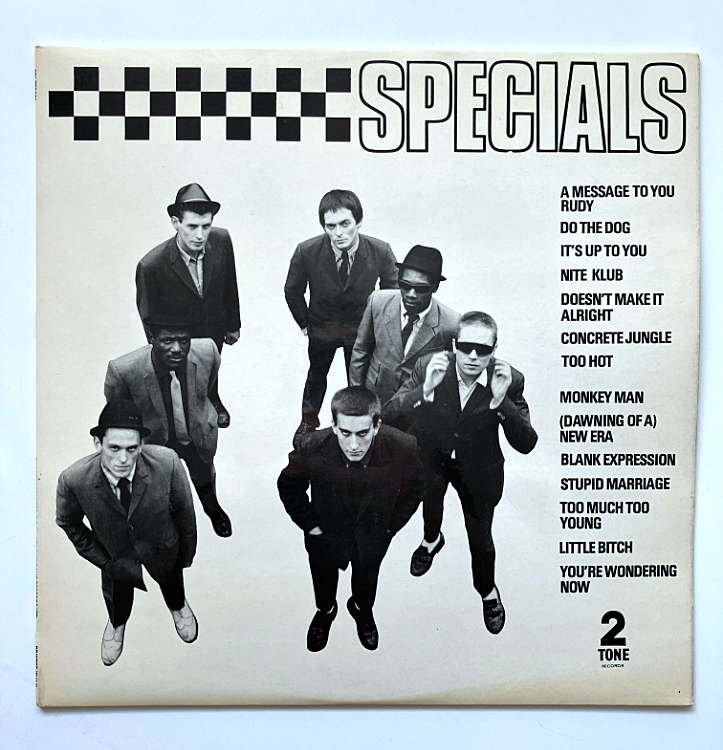
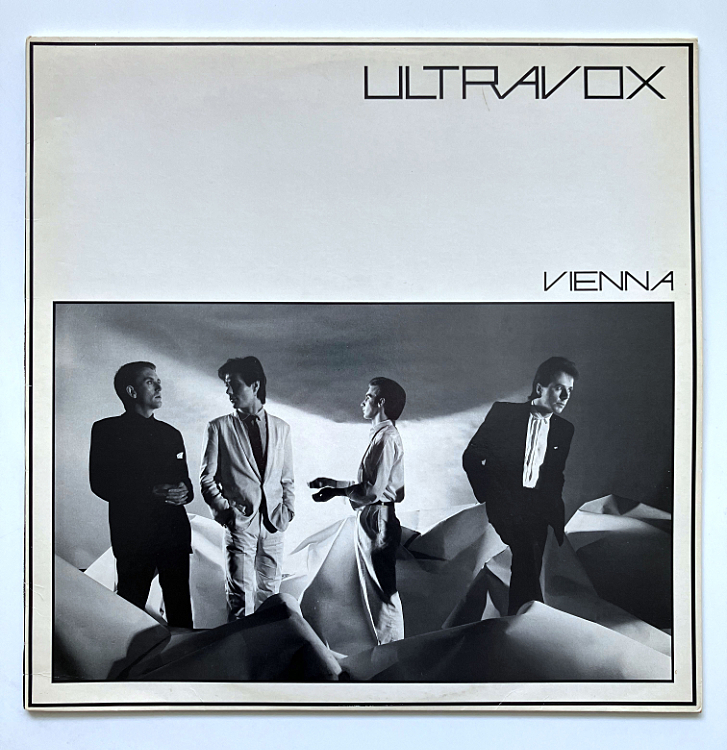

'This Year's Model' is the first UK edition with the 'manufacturing error' sleeve, which sadly was 'corrected' for all subsequent issues. 'Get Happy!!', also a first issue, has the track listings the wrong way round on the rear sleeve, and a poster. All the Costellos have the original picture inner sleeves. The genius of Barney Bubbles. More images here.
Ultravox 'Vienna', oddly, is a Swedish pressing with an inner sleeve advertising Swedish records (not ABBA!).
02.06.24 / 01 / a personal manifesto from 2002
While digging through obscurely named files on a backup drive I found a personal manifesto from early 2002 detailing what I wanted to achieve in 'church futures'. I was seeking funding to do the projects as full-time employment - I thought that I could make a significant impact in about five years if so. Unfortunately no money was forthcoming so these things had to remain as spare-time occupations, and consequently be difficult to do and take much longer. In particular my involvement with Ship of Fools had to end - travelling the country reporting on alt worship and co-hosting a discussion board into the small hours every night were not compatible with a long-hours job in architecture.
I see that I knew what I wanted to do from the start. Some of it has been achieved, some things died, some things remain to be done (like turning this site into a book!).
27.05.24 / 01 / notes on sustainability
During Clerkenwell Design Week I was a talking head on a Spacestor webinar about sustainability and longevity. Here are my preliminary notes gathering my thoughts on various aspects.
longevity and love:
if you love something you will keep it, care for it and repair it
do you love your desk?
if your employer says tomorrow we get rid of all the furniture and install new, do you cheer or say, please can i keep item x, item y, take it home?
[this also shows if people identify with the office culture expressed by the furniture]
love promotes longevity
give people stuff that they will love for a long time
acceptance of the worn and tired
knowing how to curate and refresh it
taking a pride in having old things - as a positive social value
longevity beats recycling
recycling is last option - wastes embodied carbon
simplicity:
a forty year technological revolution covered everything with CPU boxes, cables, monitors, keyboards, mice, desk phones, and more paper than ever before
furniture became complicated to cope
now that tide has receded
after a technological revolution
we can return to archetypes of table, chair
with the least adaptations to current use, to enable longevity
the simpler the better
not beholden to fixes for current issues
not requiring other parts of the same system to work
[manufacturers like you to buy into a system]
sourcing and manufacture:
sustainable means we can do something indefinitely without negative impacts
non-extractive - what we take out, we put back
new stuff:
circularity
localness - short chains (raw materials, manufacture, delivery)
quality - build-quality and aesthetic quality (which is not the same as luxury , glamour or fashion!!)
existing stuff:
how can we reuse it? (honouring the embodied carbon and original intentions for long life)
what are the challenges - condition, repair, aesthetic, operational?
what MUST we get rid of?
responsible disposal:
as complete items to other users
as raw materials for reuse or recycling
do an audit of the existing resources before starting design
treating it as the raw material for our work
how little do we have to change or add
not assuming a blank canvas that we can add some retained pieces to afterwards
fashion:
separate parts that are from parts that aren’t
maximise the parts that aren’t
make the parts that are, low environmental impact
resist false narratives of fashion that drive consumption
fashion robs things of their social value before their use value is exhausted
since it is social value that is being robbed we can choose differently
accept the dated
see the time specific nature of design as a positive quality
narratives:
The long-term part of sustainability comes after the design team have left
the client has to take the intentions forward, do the looking after, the change management, etc.
The narrative and policies have to be embedded in the culture of the client, not just as concerns of a few people who might leave.
Users need to understand and own the narrative
what has been provided and how to look after it to ensure that sustainability objectives are met
what behaviours are needed
Does the client have their own narrative?
What can we add to that?
What stories can we tell, that have worked for others, can we show them a path forward?
Does the client have in-house forums, or people with specific interests/expertise?
Does the client have existing policies that are widely understood?
How does the workforce take ownership?
So that it’s not just the business of a few technical people.
It becomes a normal system (as recycling waste has become normal).
A set of protocols that everyone understands.
No longer a novelty or challenge to how we do things.
07.05.24 / 02 / harry baker at the royal albert hall
So, the Poets' Revival at the Royal Albert Hall. The cream of the current generation of poets, not least Kae Tempest. And also Harry Baker.
Tempest a force of nature in performance as usual. They were incendiary a couple of years ago on the Greenbelt mainstage, and when the crowd roared for an encore they came out again and said:
"I don't do encores because I think they are manipulative. But I didn't want you to go away disappointed, so I came out to say thankyou."
And with that they had our hearts.
But Tempest was located mid-show. Harry closed it, after 500 years of hard-hitting Black history from George the Poet. So Harry had to lift the audience, but also honour the weight of all those who had spoken before. And he did. He landed his jokes and his serious moments. He had the audience from the start, he owned the room (what a room). I was deeply moved.
Of course he's a seasoned performer now, but we had worried about the venue and the occasion getting to him. No need. We need never worry about Harry and an audience again. Vegas beckons...
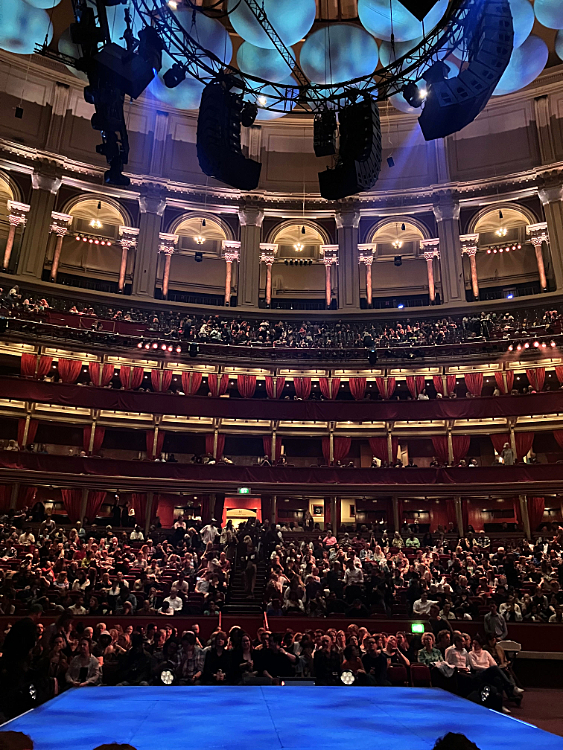
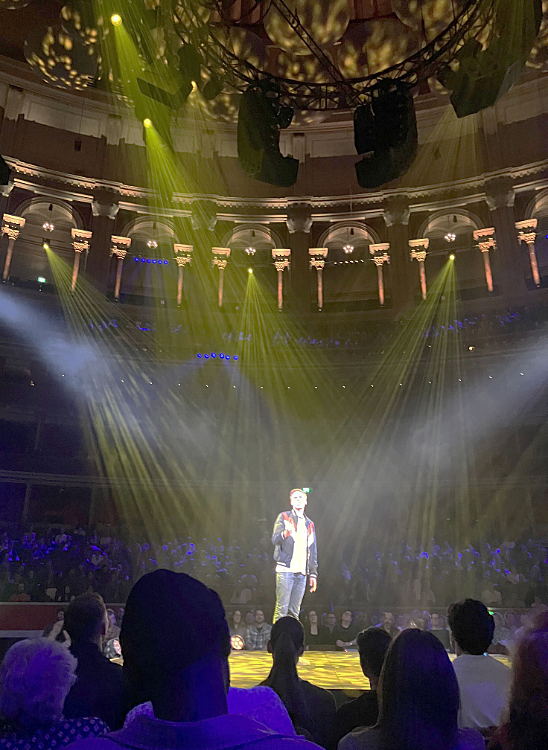

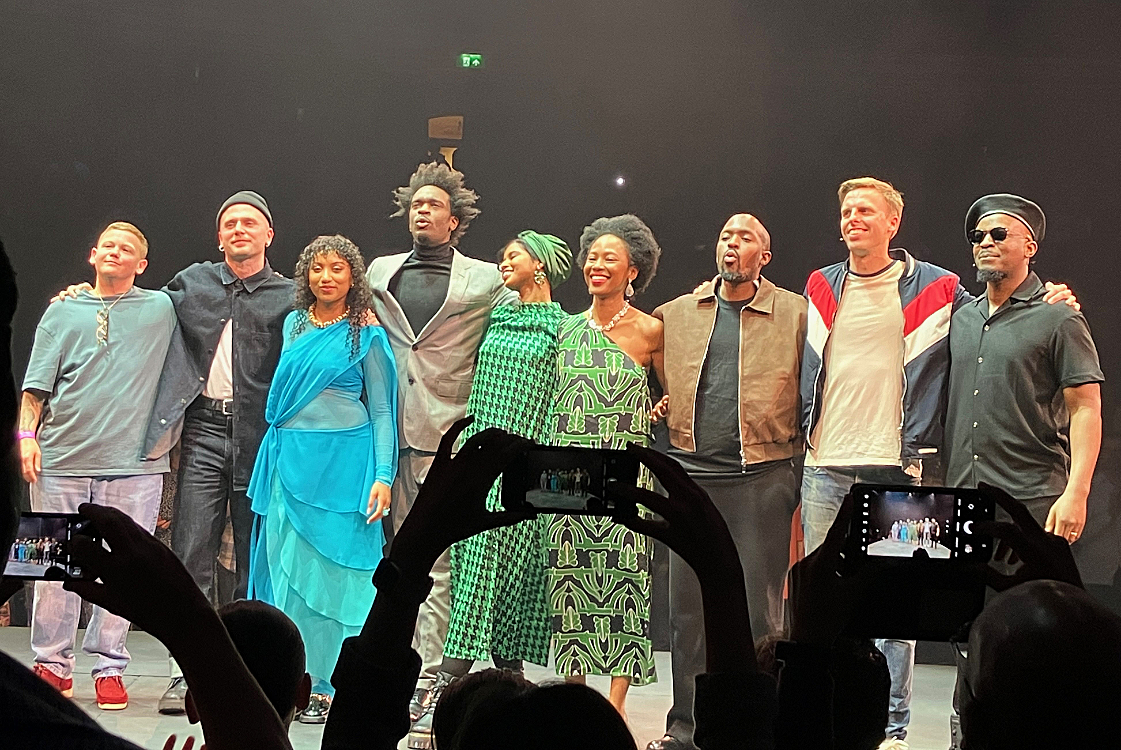
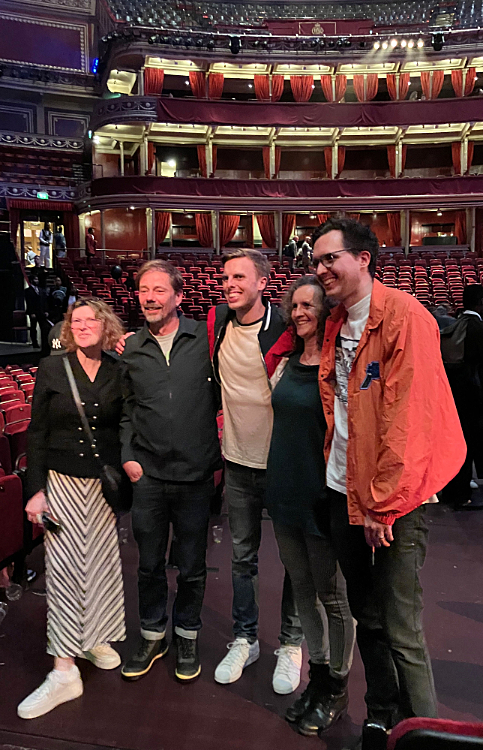
Above: The stage was in the round; Harry on it; L-R Kae Tempest, Toby Campion, Sophia Thakur, Lionheart, Momtaza Mehri, Theresa Lola, Suli Breaks, Harry Baker, George the Poet; the happy Baker family.
07.05.24 / 01 / enzo mari
I didn’t have high hopes for the Enzo Mari exhibition at the Design Museum, but it turns out to be very thought-provoking. Mari was an Italian designer who had a fairly typical career trajectory for his generation - start in the 1950s as an artist, become a product designer, become a theoretician and teacher. But Mari was a committed Marxist and worked with a sharper critique and social conscience than most of his contemporaries.
His art phase is intriguing - programmatic, which is to say that the art is algorithmic and could be produced by a computer, except such was not accessible to him at the time. It’s the visual equivalent of early electronic music.
His books, toys and pictures for children, often developed with his first wife Iela, are his most familiar works. His ‘egg and chicken’ book in which a chicken makes an egg, and the egg makes a chicken etc, was rejected by a publisher as pornographic because it implied that chickens mated, even though Mari had intentionally omitted that part!
His furniture designs of the 60s tried to be basic and simple, for ordinary people, in contrast to the ’supersensualism’ of his Italian contemporaries. This often didn’t work out in commercial terms - he found that people preferred ‘aspirational’ designs to ‘functional’ ones.
The Glifo modular bookcase had an integral joint system along the edges of the panels, requiring no additional pieces or tools for self-assembly. However, the joints collected dirt that was almost uncleanable. There was also the problem of yellowing plastic which afflicts all the plastic items of this era. Items that could last indefinitely were soon thrown out as they became unsightly. They are all still out there somewhere.
The sad thing is that the designers meant well. They were trying to create low-cost long-life items for everyone, all the ordinary people who hadn’t had access to stylish and durable goods before, and injection plastics seemed a good way to do it. And then it went yellow, or surfaces became marked and dirty in ways that couldn’t be cleaned or repaired.
In a sense, Autoprogettazione (‘Self-design’) was the critical response to these problems. Autoprogettazione was a set of mail-order instructions for making your own furniture using simple carpentry techniques. No furniture was sold, not even as self-assembly kits. You had to buy your own materials and Do It Yourself.
Mari’s primary intention was to reduce alienation, in the Marxist sense, by changing people’s relationships to their goods. People have a different relationship to things they have made themselves. They become artisans rather than consumers. The ‘rustic’ aesthetic, though appealing, was not at all the point. One could after all paint or modify the furniture - it’s up to you, you have become a person who can make things!
Autoprogettazione enabled Mari to escape the trap of the anti-design movement (1968 onwards, Sottsass, Colombo, Mendini et al). The intention of anti-design was to critique or reject consumerism, but as a movement of Italian designers it always resulted in yet more chic consumer objects - it ended up as Memphis. Capitalism could not be critiqued by the production of objects, however provocative - it knows how to sell rebellion back to you.
Mari could assume in 1973 that ordinary people knew simple carpentry (sawing, drilling, screwing, nailing) and had some space to do it. At this time my father was making shelves and bookcases, my generation had woodwork lessons at school, and there were many articles in books and magazines showing how to make furniture. I doubt that this general knowledge still exists, in the age of Ikea. This really is alienation, when the things you could make are sold to you as consumer objects, so that you can no longer imagine making them or have the skills to do so, but can only buy what you are offered.
Some of the later stuff in the exhibition steps into alt.worship territory. People wonder where we get our ideas… or rather, it’s reinforcement and techniques.
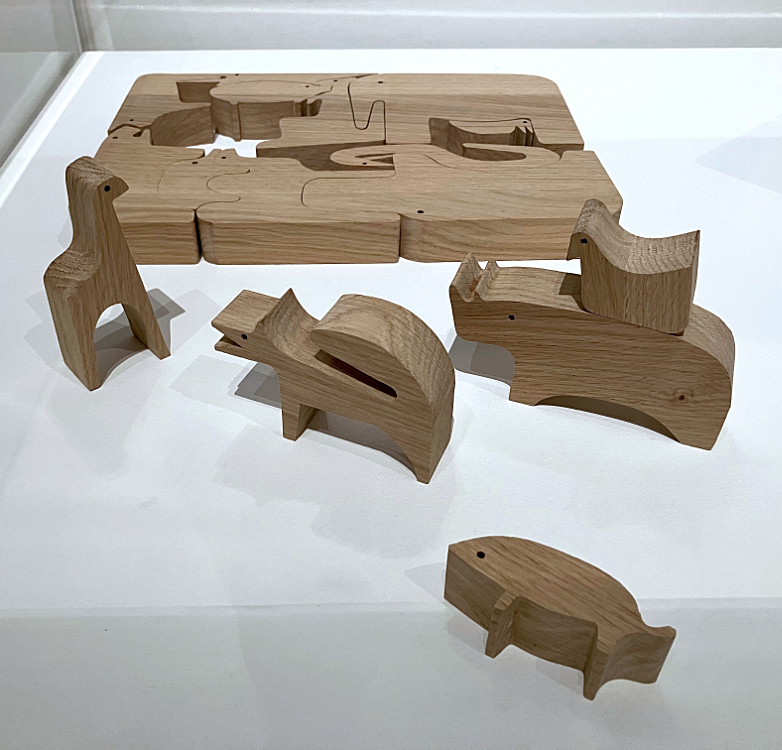
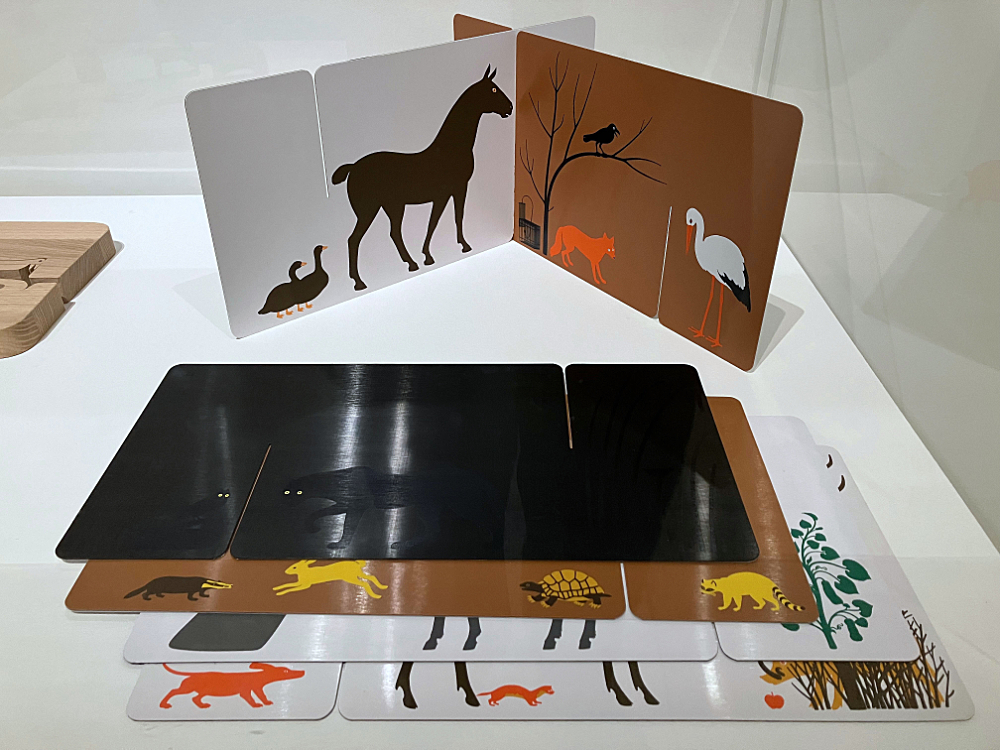
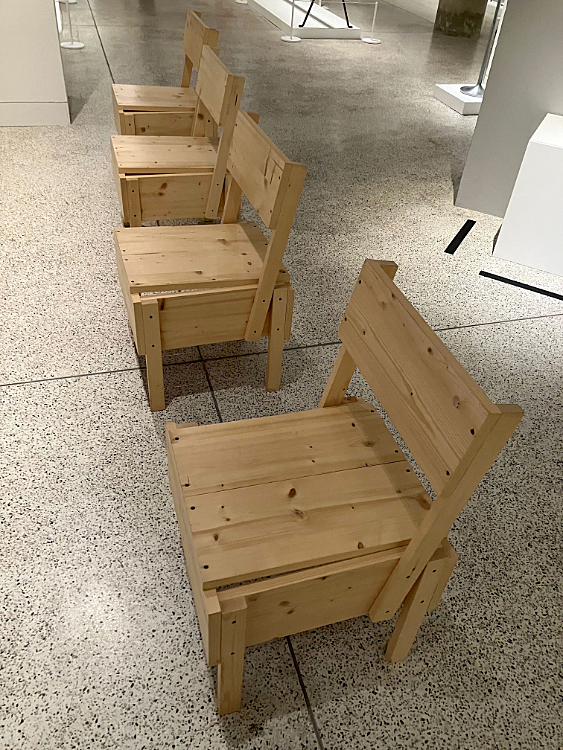
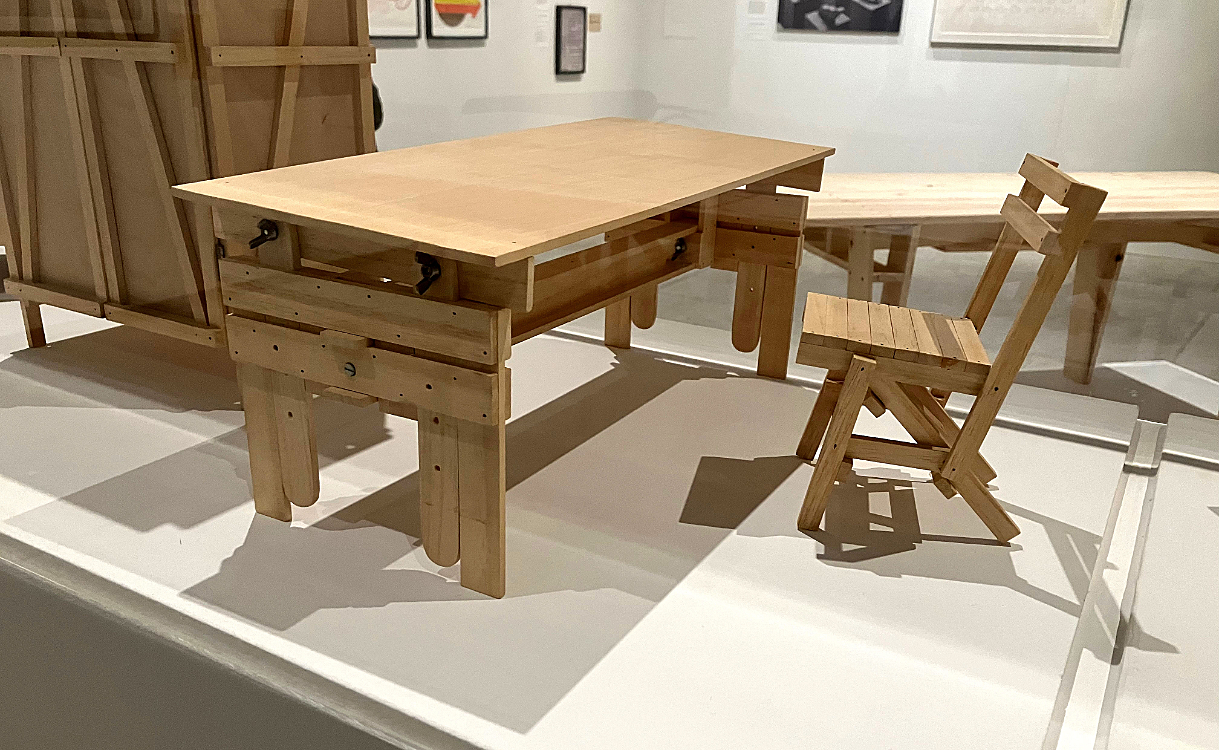
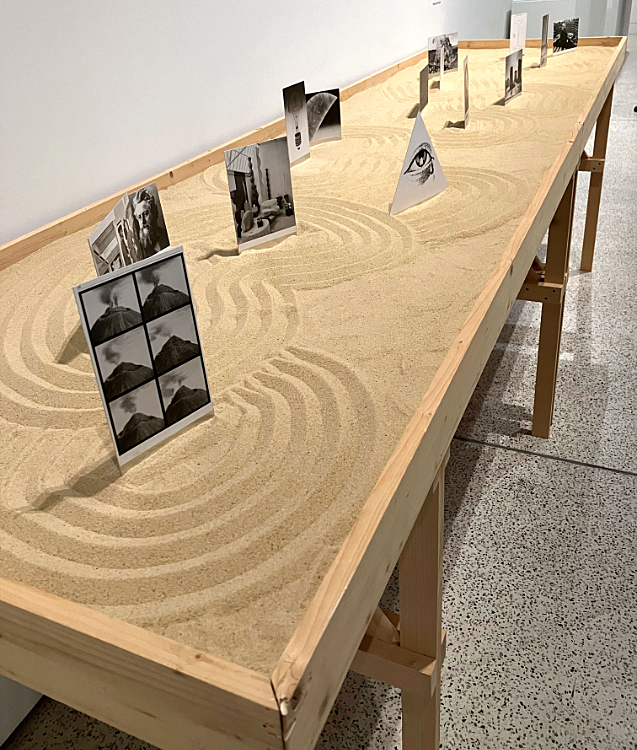
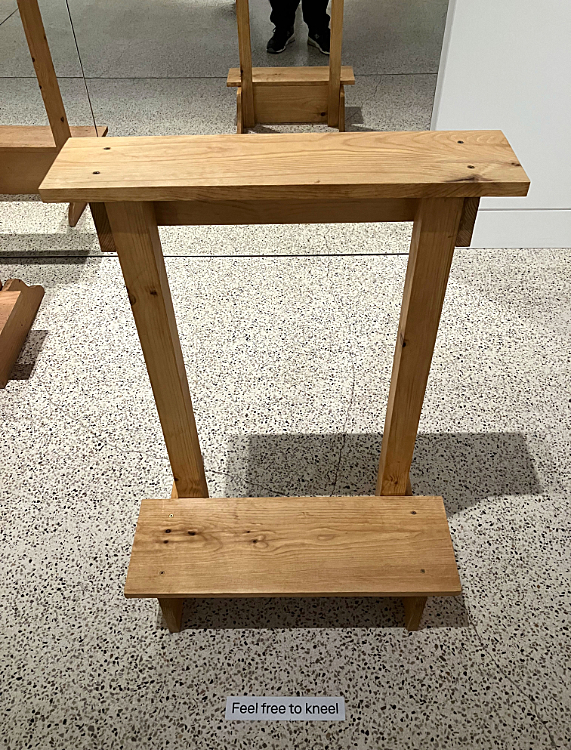
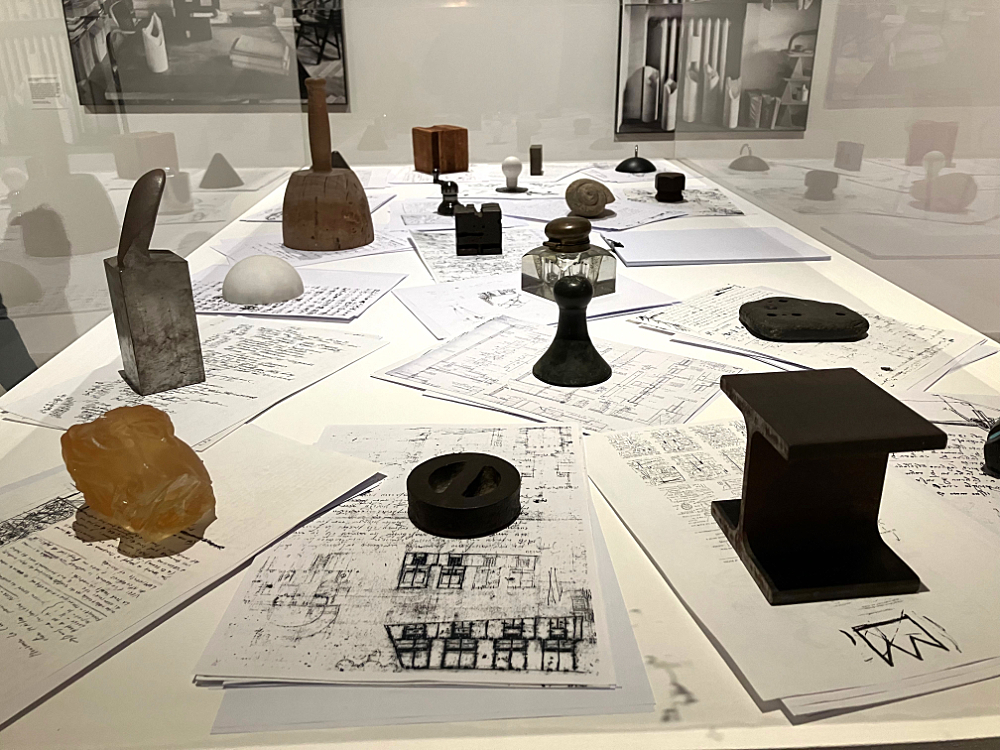
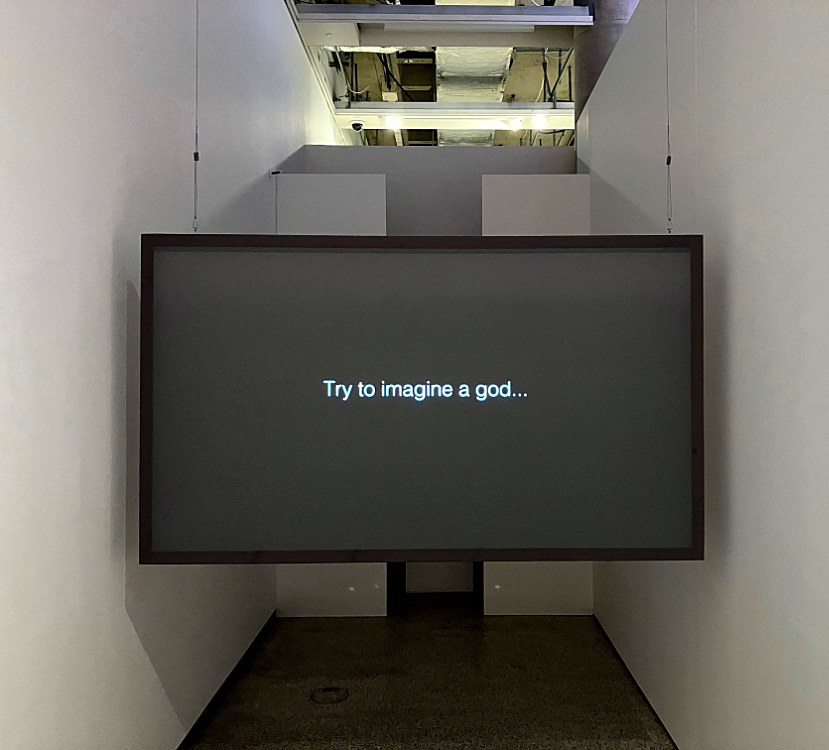
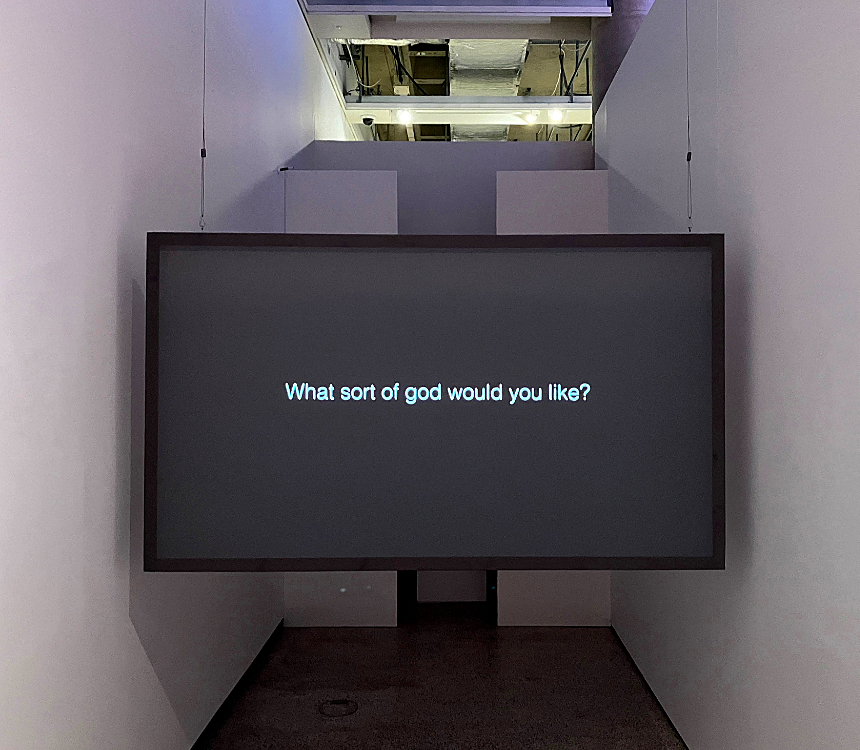
15.04.24 / 02 / goodbye landline
I just ended my landline contract. It was a waste of money. Nobody uses it any more (except for nuisance callers). But ending it feels scary. This is incomprehensible to younger people. A landline was a necessity and a mobile was an expensive unreliable luxury. Now they cost the same, but the mobile does far, far more for the money. The landline only does one thing, and that use has evaporated.
I regret buying a new landline handset a year ago, for the sake of my mother, with an answering machine - another quaintness (if only it had an actual tape cassette!). But I'd rather she phoned my mobile so I could take it immediately. You could see the way things were going by the fundamentally outdated design of the handsets - my 'new' one works like a mobile phone of the 00s, fixed keypad, tiny screen. I struggle with it after 15 years of touchscreens. The market for landline sets is now the elderly, and another decade will see the end of it.
So this is another moment when a technology that seemed eternal vanishes from my life, like TVs or tape recorders. The funny thing is the alteration to my sense of home. Home was where the phone was, tethered to a socket. You had to have a fixed address to house it, so you could be contacted.
15.04.24 / 01 / coffee at 4pm
I wish coffee shops weren't in the habit of closing at 4pm, or even 5. For me, late afternoon is coffee time. I've done whatever I'm doing in the morning and afternoon, and it's time for a break. Time to get out of the office or home for a while, time to take stock, to consider what to do next. Not yet the close of day, but the break before the one last thing that will run to 7 or 8pm. The coffee gets me through my circadian late-afternoon low point.
But good, independent coffee shops, most of them, see their role as serving the morning rush and lunchtime. The chains stay open later - not always much later. It's been worse since the pandemic, when many shops reopened with reduced hours and have got comfortable with that. There are a couple with longer hours, but my choice is restricted. I go searching in different streets, and they have all just closed.
Surely I'm not the only person working this kind of rhythm? It feels quite natural to me, given the way our working hours extend into early evening in London. A lot of people cling to the desperate hope that they'll go home on time if they can just power through without a break. I've tried that, but it's just a recipe for total exhaustion by the time you actually get home.
10.04.24 / 02 / clearing the bicycle racks
They’ve cleared the bicycle racks outside my flat again. They being the estate management I suppose. The sudden void is shocking. There are two left.
In a block of flats people buy used bicycles and then don’t use them. The bike is locked to the racks, rusting. The owners move and abandon the bike, still locked. They get bikes for their children, who break them or tire of them. These are left on the grass or path. Some people hoard bikes, two or three chained together, none used or maintained. When the management tie notices of removal to them these are promptly torn off but the bikes still don’t move or get looked after. Eventually as yesterday the management cut the whole lot off and remove them. There was a beautiful 1980s Peugeot, white saddle and trim, silver and stripes. The hoarder let it rust at the bottom of his hoard. I would have loved to have had it, when it was in good condition. What a waste.
I wonder if the ubiquity of hire bikes is affecting the hoarding. They get dumped around but they also get ridden away again.
10.04.24 / 01 / Grace movies 2007-09
Over Easter I updated the Grace services archive with photos for 2007, 2008 and the first service of 2009. This period also includes movies of the services, starting with Nine in December 2007 and ending with Journeying in January 2009.
The first movies - Nine, Elijah - are low resolution, probably shot on my new Sony Eriksson Cybershot phone which had a good-for-the-time camera in the back. It was the first phone camera I had that was worth using, even so it struggled with the low light of Grace services. The quality improved considerably for Lunch not included, Wounded in all the right places, and Contamination - I was now using a real camera.
Biggest regret - no footage of Ed smashing the piñata in Clean. Not even a still photo from anybody! I found myself in the balcony lowering the piñata with Adam, and maybe I left my camera below, but there are no photos from me for the rest of the service so I must have forgotten to bring it.
25.03.24 / 01 / a metaphorical landscape
In recent years there have been a number of furniture ranges aimed at the ‘agile working’ market. Draggable, pushable, modular. Writable screens that you can tuck under your arm and put up on easels. Desks with wheels. Carts and screens with wheels. Everything with wheels. It’s all good, functionally speaking. Assemble it to suit your work-group needs. Drag it somewhere else tomorrow.
But the design language of these ranges tends to be utilitarian. Just doing the job. Tubes and castors and laminate and boxes. I don’t find much pleasure, not even the pleasure of the truly utilitarian, the industrial or artisanal.
I want a metaphorical language. Something that makes a place, that speaks to the imagination and the emotions. I’ve only been thinking about this recently in explicit terms, but looking back all my stuff has worked like this. I’ve always been influenced by Ettore Sottsass and Archizoom, the speculative environments of Italian anti-design designers around 1970. Chairs as grass or baseball mitts, beds as tombs, offices as deserts or jungles.
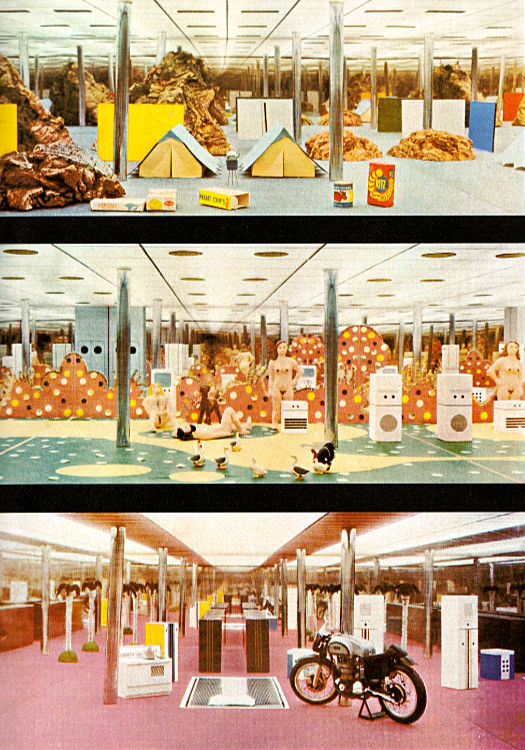

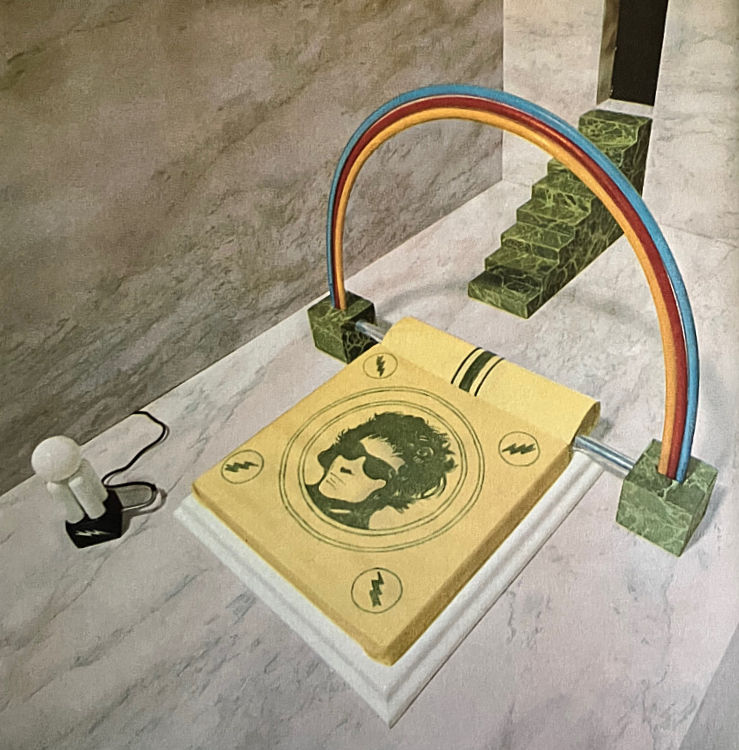
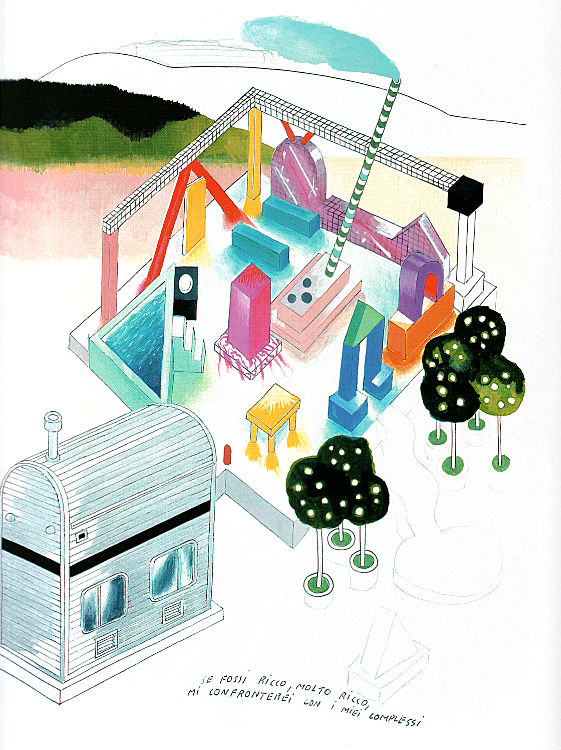
Above, Archizoom 'No-Stop City' 1971, Ettore Sottsass 'Grey furniture' 1970, Archizoom 'Dream Beds' 1967, Ettore Sottsass 'If I were rich I would confront all my complexes' 1976.
We live by narratives. The narrative of 00s furniture was, we are corporate, global, technological. Once this was refreshing! An escape from the provincial and small. The narrative of the 10s was, we are hipsters in a startup. This was more fun, but it was mostly a lie. Both these narratives were totalitarian. Everyone has to play.
I don’t know if a poetic approach is any free-er, but can it allow for more ways of being? A diversity, to use the currently fashionable term? I’m not sure how much organisations like this.
24.03.24 / 01 / goodbye monotype
Since 2015 I've had a subscription to Monotype via fonts.com, primarily to enable webfonts on my sites. Grace is of course Helvetica, and smallfire.org and smallritual.org were Neue Haas Unica which is an 'improved' Helvetica - a font geek font for those who can tell the difference. I hoped that webfonts would make a slightly more professional experience and deal with some of the crudity of Windows font rendering.
But Monotype have been closing down fonts.com and transferring all accounts to the main Monotype site myfonts.com. At least that's what they said they were doing, so I assumed a seamless transfer. I suddenly got an email last Monday telling me that my subscription expired that day and I needed to sign up to a new plan to continue. At four times the previous cost.
Investigating online I found angry people on Reddit whose clients were struggling with massive price increases or they lose their brand font libraries. Turns out Monotype was bought by private equity who are screwing the customers and fattening it up for sale.
It was always quixotic of me to subscribe to get a better class of Helvetica - I had periodically questioned why, but it was affordable. No longer. So I didn't renew.
All my sites have reverted to basic Helvetica/Arial, with a few small adjustments. Even I can hardly tell the difference on the Grace site. smallfire.org lost the heavy and light font weights, but it's hard to tell what's changed unless you directly compare.
smallritual.org looked bad. Turned out the nice generous highlighter effect was a function of the webfont, somehow. In basic fonts the background colour shrank to the actual text and ugly gaps appeared. I almost gave up on the idea, but then tried adding a thick matching border to the link style - it worked. But I'm sore about losing Unica.
This is why every firm that rebrands now commissions its own fonts. It's cheaper to pay someone to create a font than pay exorbitant license fees indefinitely. Maybe we should commission a Grace font. Trouble is it would have to be similar to Helvetica ;-), and there have been so many new fonts in that space in recent years that I can't imagine how they create enough differences to avoid copyright issues.
12.03.24 / 01 / hearing loss
I was finding it hard to hear what Jonny and Mike were saying to me in the Jazz Cafe, even though they were next to me. This had been coming for a while, so I booked a hearing test.
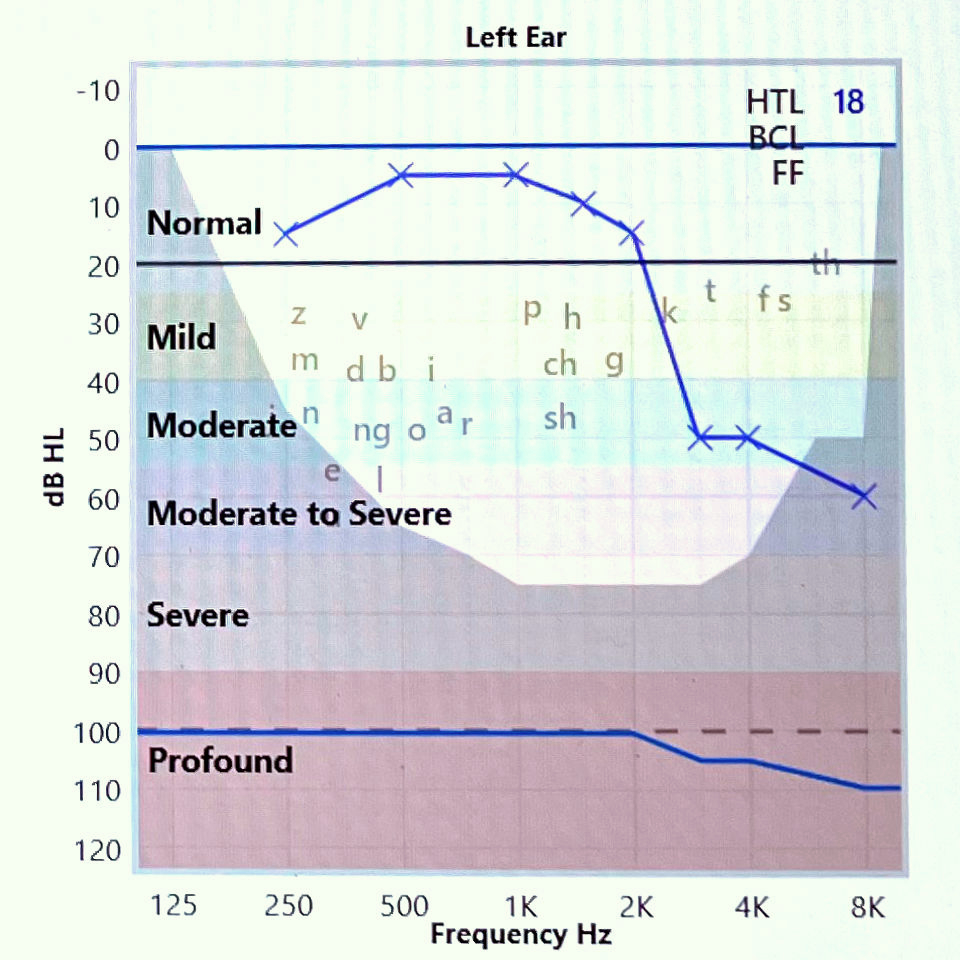
The left ear - the good ear - is losing the top end due to age. If one more data point drops I will need a hearing aid. It’s actually better than I thought - just that losing the high frequencies reduces clarity of speech.
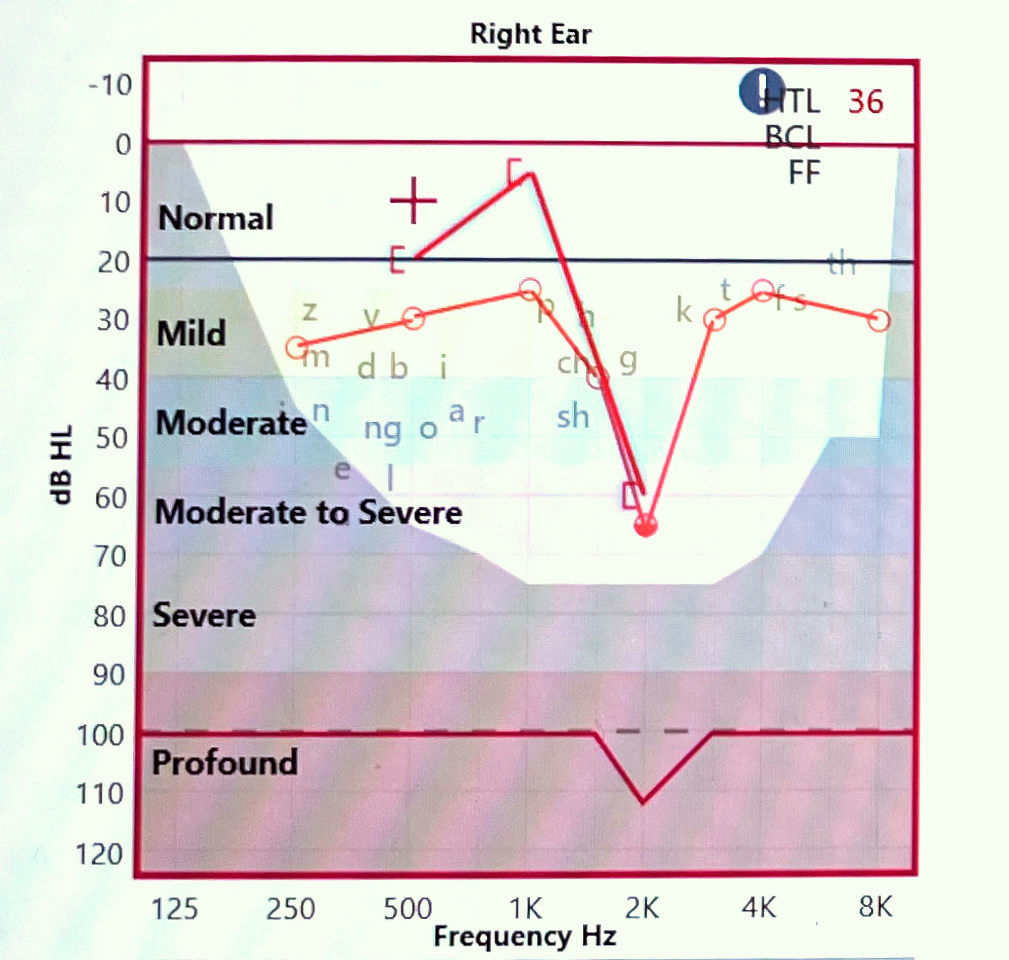
The right ear was damaged by a badly programmed drum machine at an all-nighter in Brixton Academy in 1991 - The Shamen headlined I think, but the drum machine belonged to Meat Beat Manifesto. The hi-hat was way too loud and penetrating. I felt it at the time, but my hearing collapsed a couple of days later at a church pantomime rehearsal. It was ‘Mother Goose’, and the woman playing the goose gave a loud and piercing squawk, again and again - my ear was agonisingly painful and I had to leave and seek medical help. It took five years to recover to the point of being able to be somewhere with amplified music, and then only with an earplug in my right ear.
To this day I carry earplugs with me everywhere, in case of a loud environment. I often put the other one in to protect my left ear - because once the damage is done it’s too late. The earplugs reduce the volume, but more they soak up the risky high frequencies. Many venue sound systems are amazingly harsh - I feel that I get a better experience with earplugs. I know that the sound system is really well balanced when I can take both earplugs out - no stray high frequencies.
I had no record of the early 90s hearing tests, so was curious to see what it looked like. Overall there’s less hearing loss than I imagined, but there is what they call a ‘notch’ at 2K - a big one. The hi-hat took the nerve cells out, WHAP! I didn’t want a hearing aid at this time, I’ve lived with it for 30 years. When the good ear needs a hearing aid I will try both.
Tinnitus - of course in the right ear, but it’s diminished over time (or my brain tunes it out). At first I wondered how I could cope. I remember resting my head against a gurgling fridge to get relief. Sadly the left ear now has tinnitus too. I know when a room is really silent because I hear piercing whines.
I had forewarning of all this. My hearing had been noticeably reduced by listening to acid house all day on a Walkman 1988-90, apart from clubbing. I had no regrets. My feeling is, your body will wear out anyway, so try to get the damage in cool ways (note that I ascribe the hearing loss to a drum machine not a church panto goose). Damage as a memento of doing something interesting.

